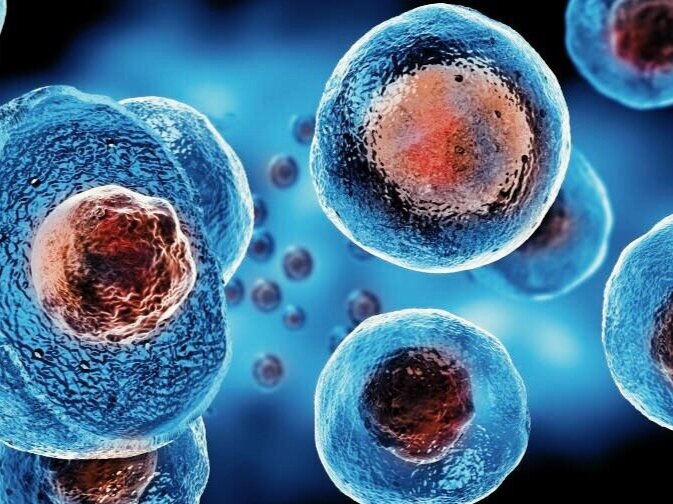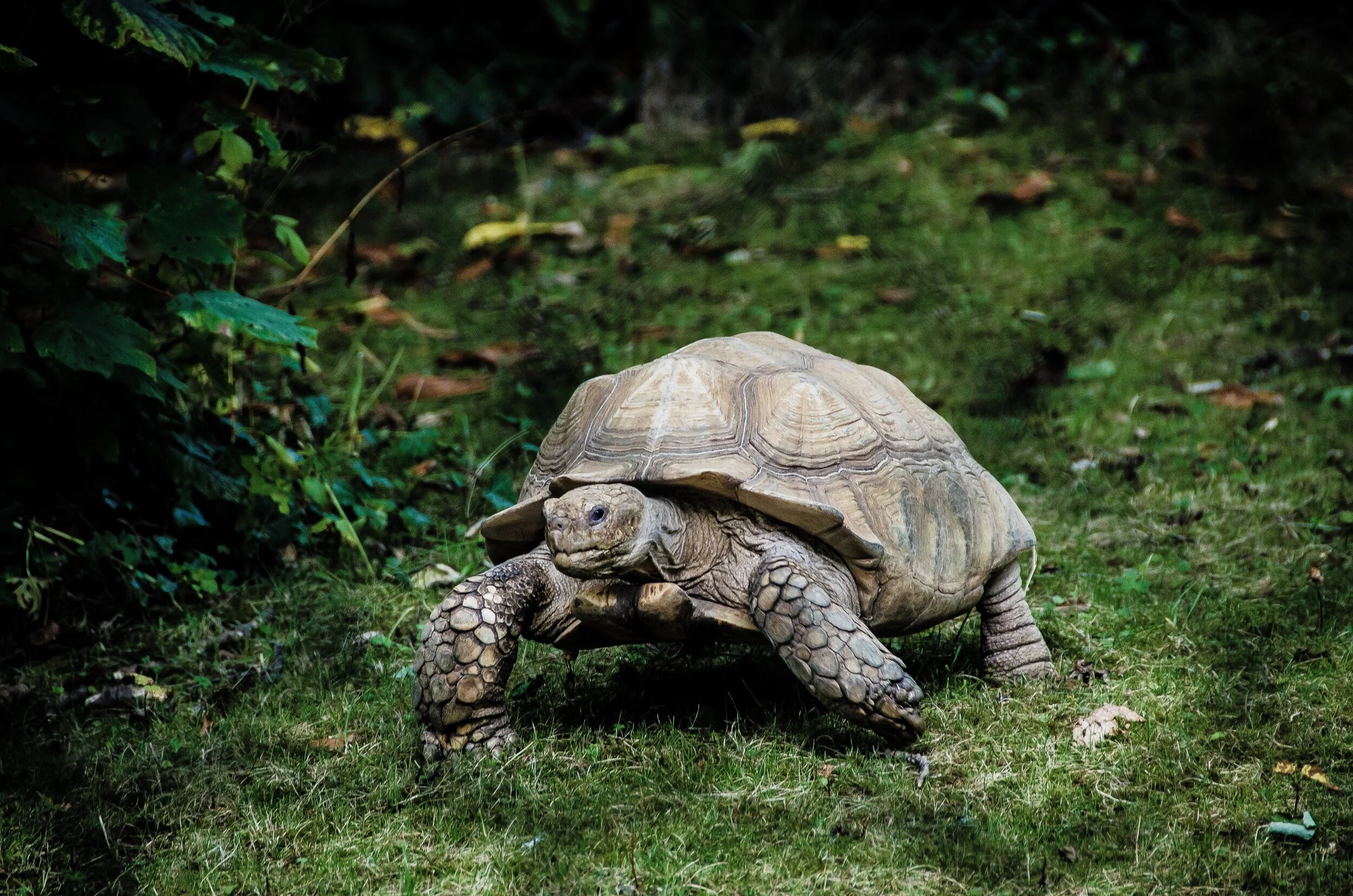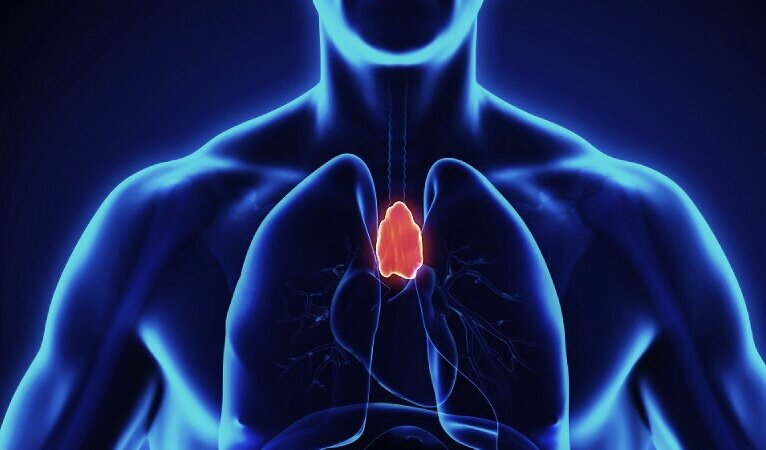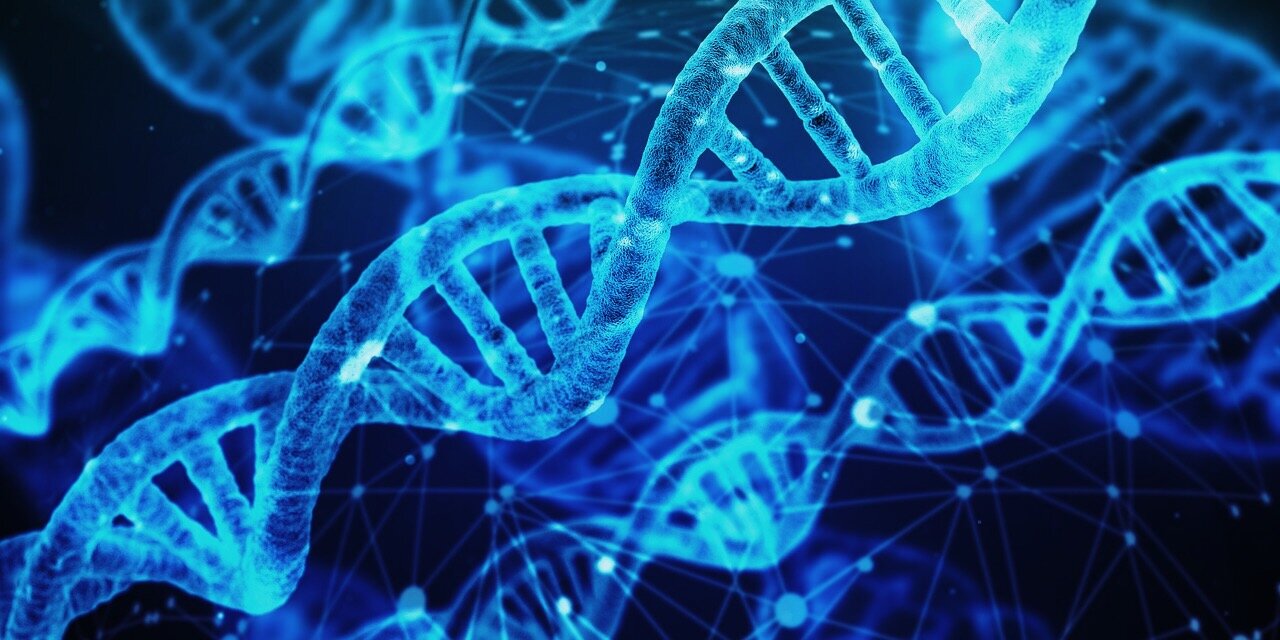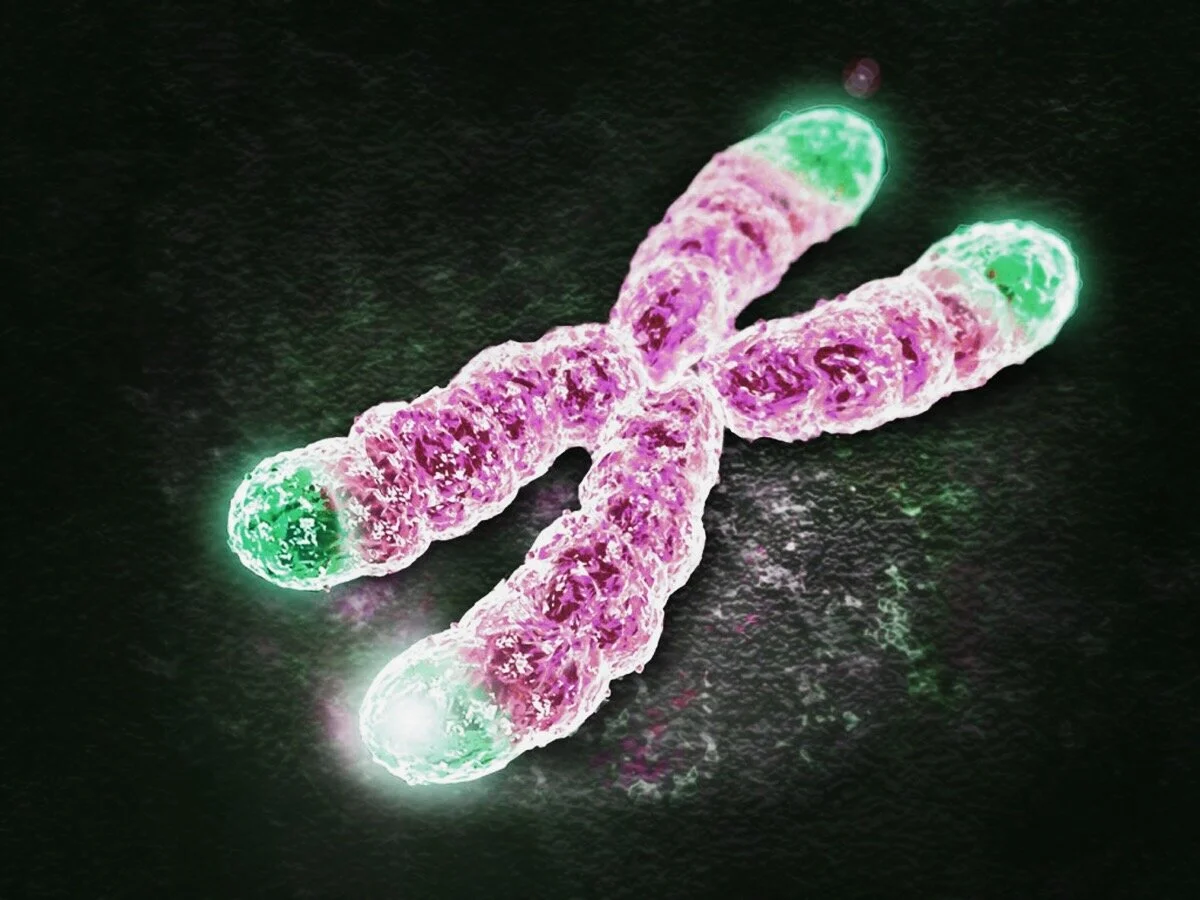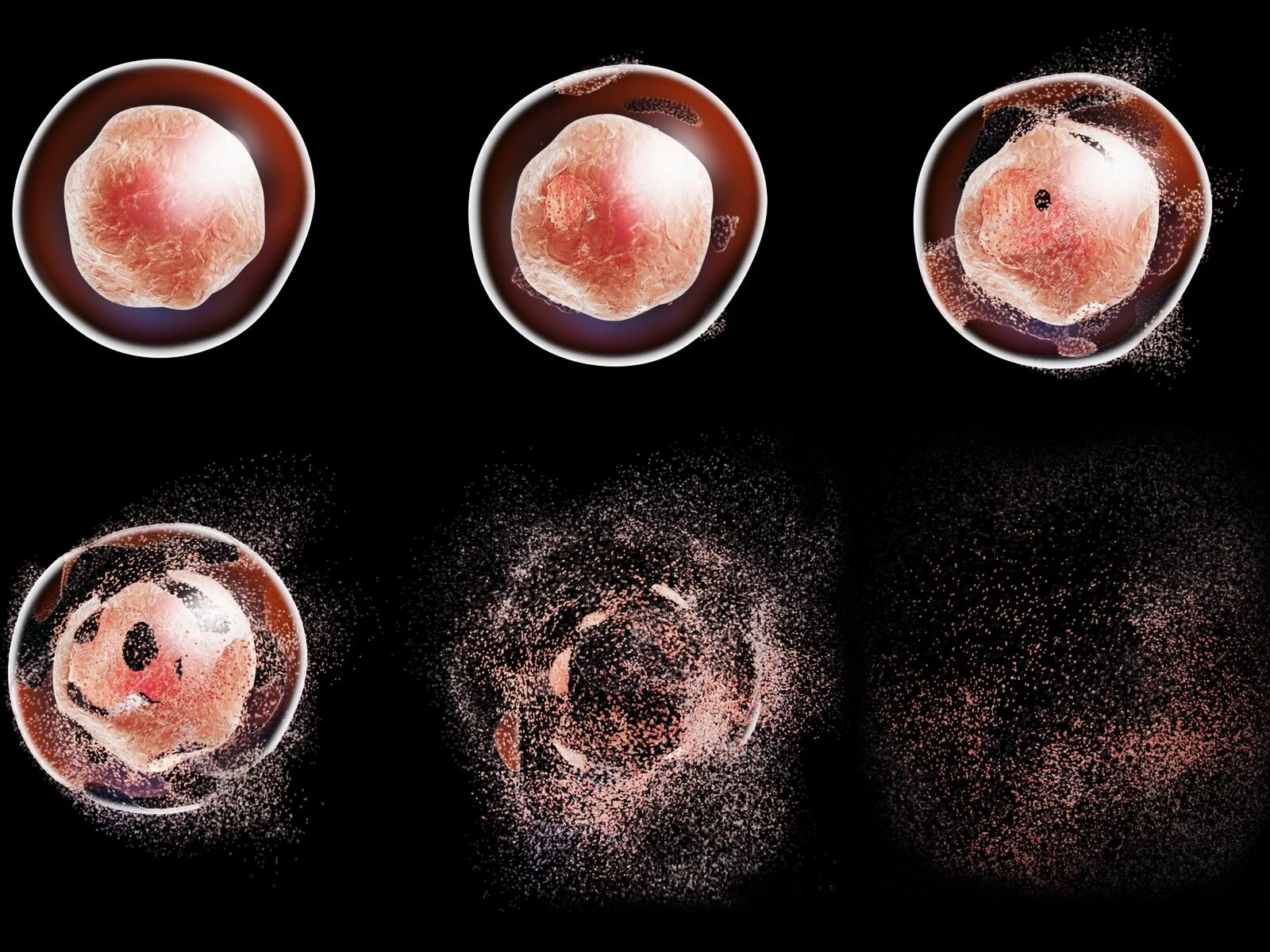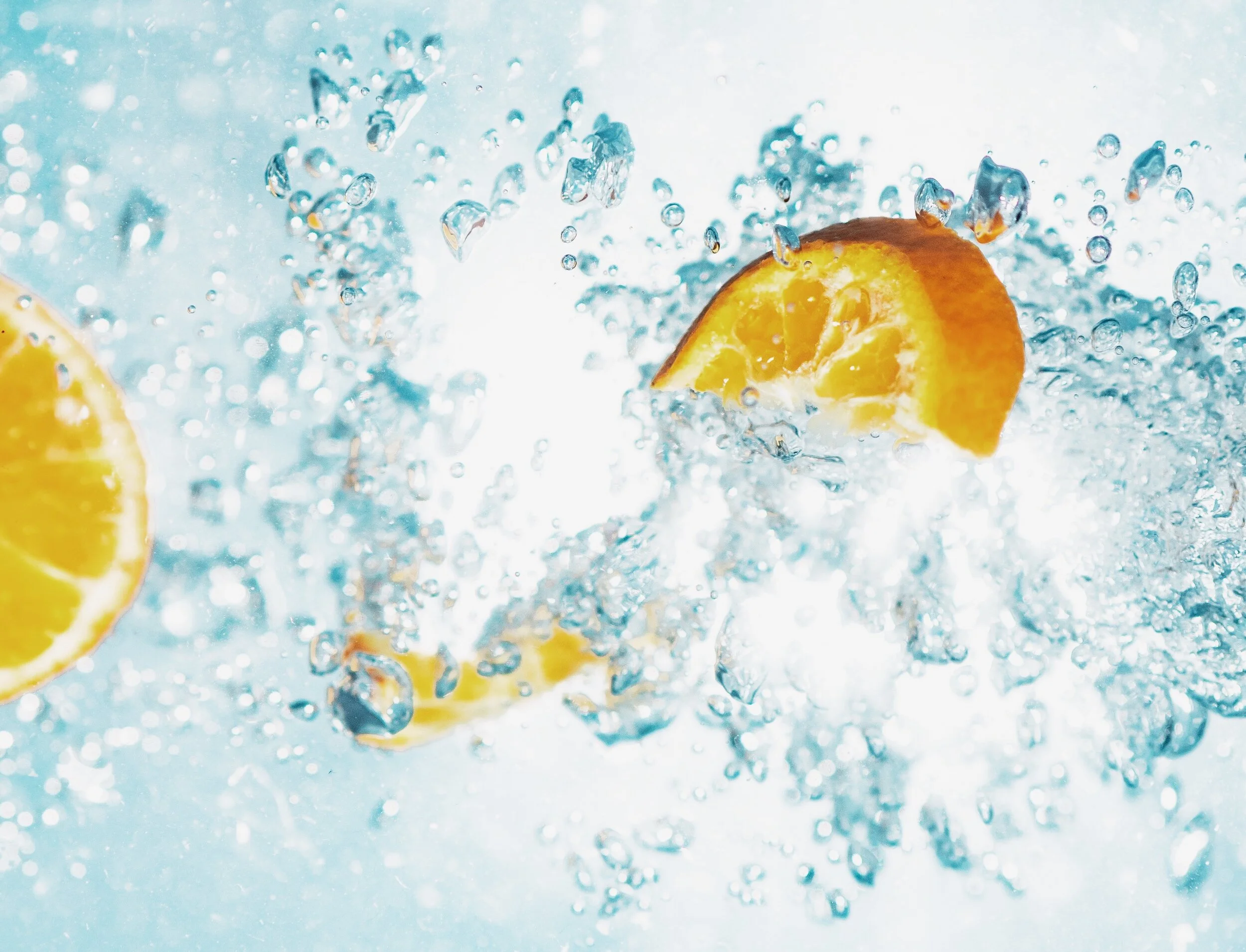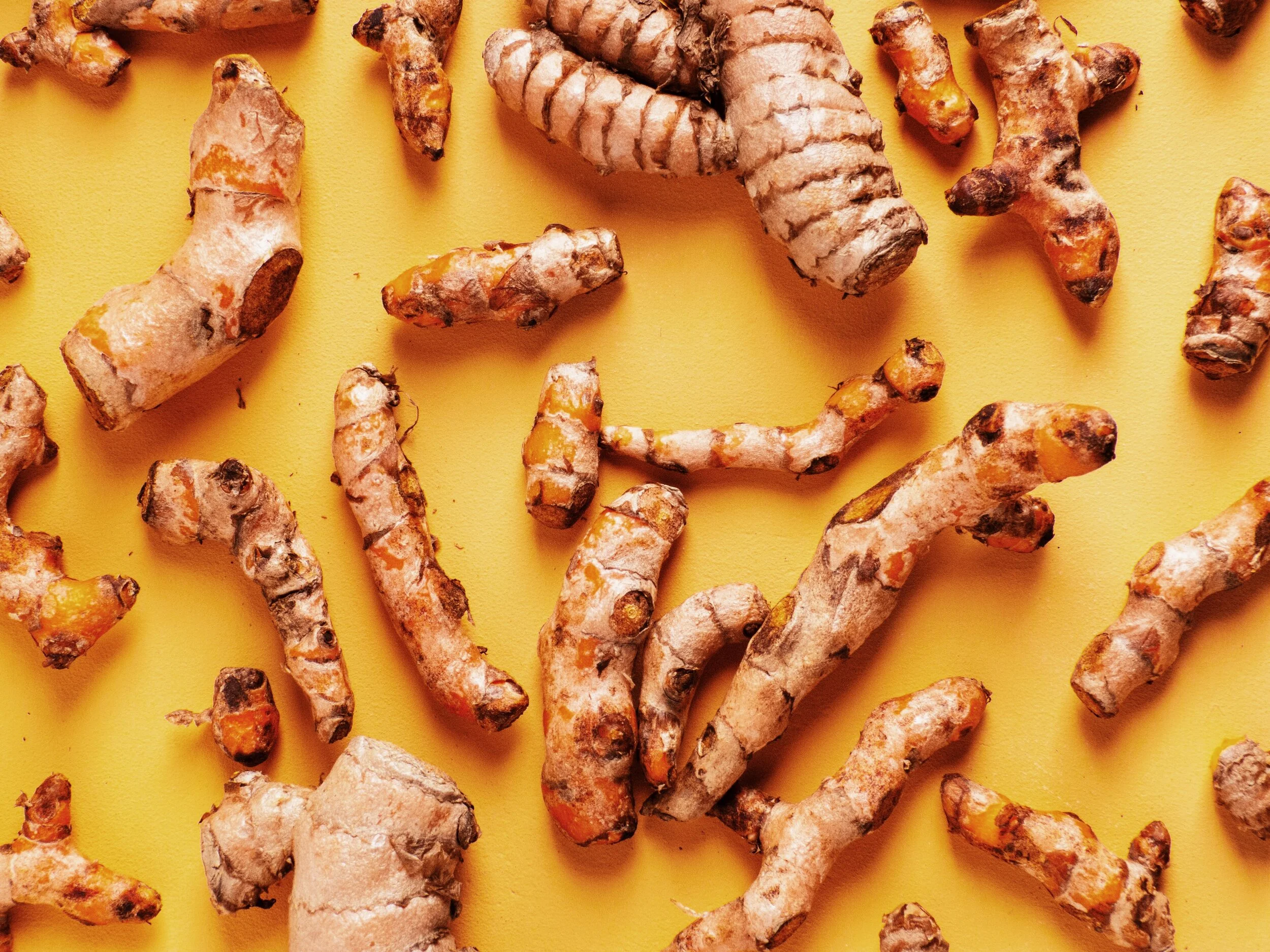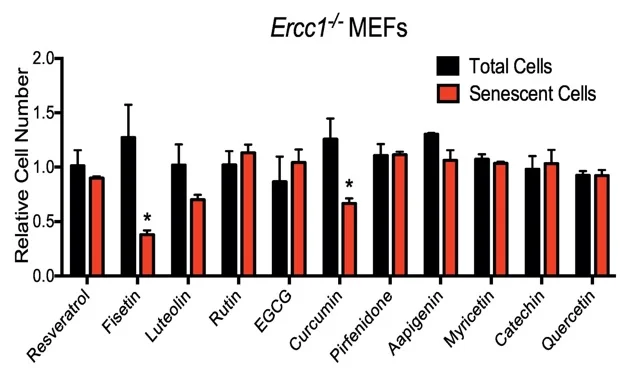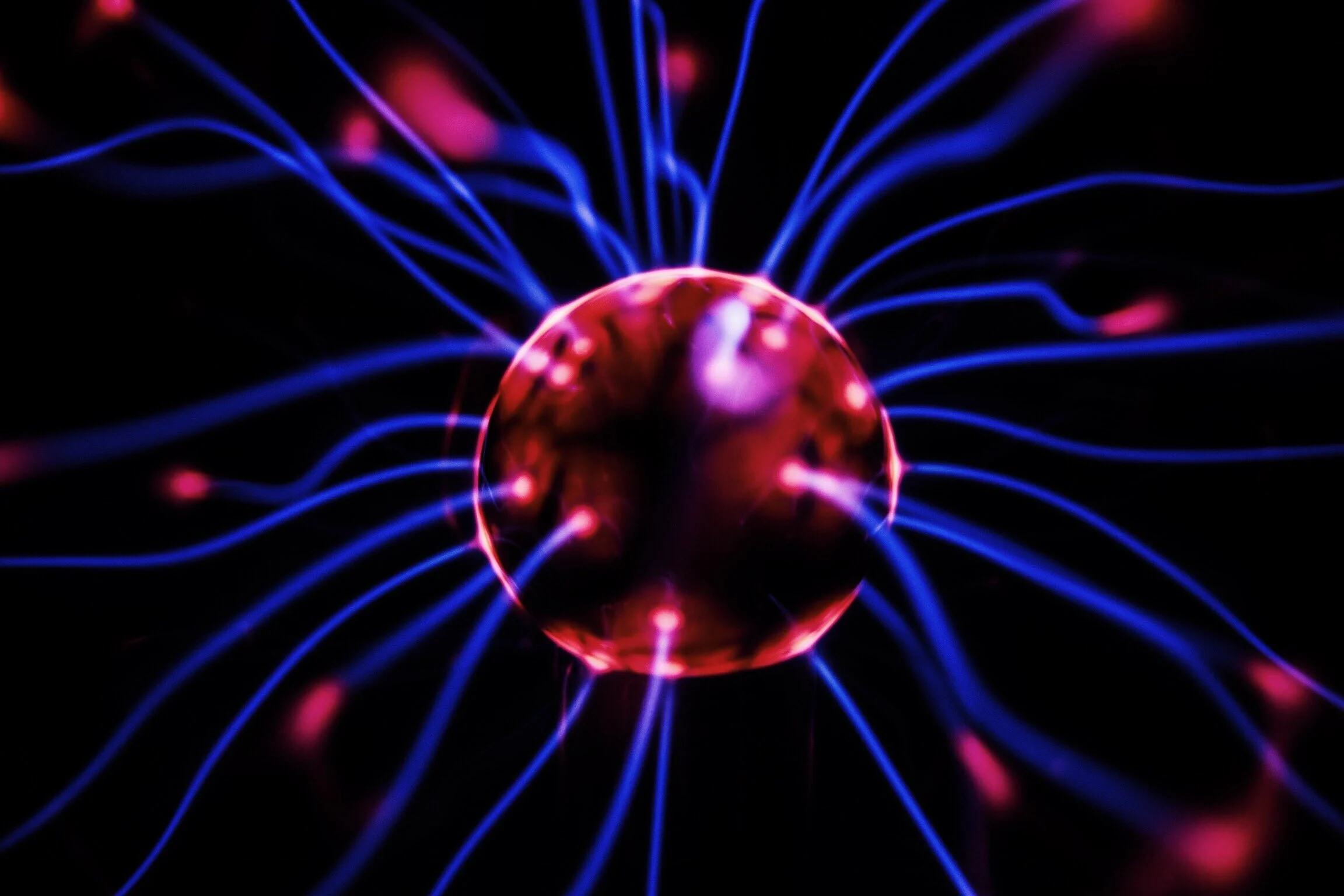
RECENT
NAD Patches - Do they work?
We explore what are NAD patches, how do they work and what are the potential benefits, if any.
Introduction
NAD, or nicotinamide adenine dinucleotide, is a coenzyme found in all living cells. It plays a key role in a range of biological processes, including energy metabolism, DNA repair, and cellular signaling. In recent years, there has been growing interest in the use of NAD patches as a way to increase NAD levels in the body. In this article, we will explore what NAD patches are, how they work, and their potential health benefits.
What are NAD Patches?
NAD patches are transdermal patches that contain NAD precursors, such as nicotinamide riboside (NR) or nicotinamide mononucleotide (NMN). These precursors are converted into NAD in the body, increasing the levels of this important coenzyme.
How do NAD Patches Work?
NAD patches work by providing the body with NAD precursors, which are converted into NAD in the body. NAD is a critical coenzyme involved in a range of biological processes, including energy metabolism, DNA repair, and cellular signaling. By increasing NAD levels in the body, NAD patches may offer a range of potential health benefits.
Potential Health Benefits of NAD Patches
Improved Energy Metabolism: NAD is involved in energy metabolism, helping to convert food into energy that can be used by the body. By increasing NAD levels in the body, NAD patches may help to improve energy metabolism, potentially leading to increased energy levels and improved athletic performance.
Anti-Aging: NAD has been shown to play a role in aging, with declining NAD levels being associated with a range of age-related conditions. By increasing NAD levels in the body, NAD patches may help to slow the aging process, potentially reducing the risk of age-related conditions like Alzheimer's disease and cardiovascular disease.
Improved Cognitive Function: NAD has been shown to play a role in cognitive function, with declining NAD levels being associated with cognitive decline. By increasing NAD levels in the body, NAD patches may help to improve cognitive function, potentially reducing the risk of conditions like dementia and Alzheimer's disease.
Improved Exercise Performance: NAD has been shown to play a role in exercise performance, with declining NAD levels being associated with reduced endurance and muscle function. By increasing NAD levels in the body, NAD patches may help to improve exercise performance, potentially leading to increased endurance and muscle function.
Potential Treatment for Neurological Disorders: NAD has been shown to have neuroprotective effects, potentially offering a treatment option for neurological disorders like Parkinson's disease and multiple sclerosis. By increasing NAD levels in the body, NAD patches may help to protect against neuronal damage, potentially reducing the risk of these conditions.
Conclusion
NAD patches are transdermal patches that contain NAD precursors, such as NR or NMN. By providing the body with these precursors, NAD patches may help to increase NAD levels in the body, potentially offering a range of health benefits, including improved energy metabolism, anti-aging effects, improved cognitive function, improved exercise performance, and potential treatment for neurological disorders. However, more research is needed to fully understand the potential benefits and risks of using NAD patches.
Sources:
Braidy, N., Berg, J., Clement, J., Khorshidi, F., Poljak, A., Jayasena, T., ... & Sachdev, P. (2021). Role of nicotinamide adenine dinucleotide and related precursors as therapeutic targets for age-related degenerative diseases: rationale, biochemistry, pharmacokinetics, and outcomes. Antioxidants & Redox Signaling
Long, A. N., Owens, K., Schlappal, A. E., Kristian, T., Fishman, P. S., & Schuh, R. A. (2015). Effect of nicotinamide mononucleotide on brain mitochondrial respiratory deficits in an Alzheimer’s disease-relevant murine model. BMC Neurology, 15(1), 19. doi: 10.1186/s12883-015-0272-x
Mills, K. F., Yoshida, S., Stein, L. R., Grozio, A., Kubota, S., Sasaki, Y., ... & Imai, S. (2016). Long-term administration of nicotinamide mononucleotide mitigates age-associated physiological decline in mice. Cell Metabolism, 24(6), 795-806. doi: 10.1016/j.cmet.2016.09.013
Moreno-Sánchez, R., Rodríguez-Enríquez, S., Marín-Hernández, A., & Saavedra, E. (2007). Energy metabolism in tumor cells. The FEBS Journal, 274(6), 1393-1418. doi: 10.1111/j.1742-4658.2007.05686.x
Sinclair, D. A. (2013). Nicotinamide mononucleotide, a key NAD+ intermediate, treats the pathophysiology of diet-and age-induced diabetes in mice. Cell Metabolism, 17(6), 819-831. doi: 10.1016/j.cmet.2013.04.005
Yoshino, J., Mills, K. F., Yoon, M. J., & Imai, S. (2011). Nicotinamide mononucleotide, a key NAD+ intermediate, mediates age-associated mitochondrial dysfunction in mice. Cell Metabolism, 10(6), 668-676. doi: 10.1016/j.cmet.2011.10.012
The benefits of L-theanine: Stress, cognitive performance and sleep
L-theanine is a naturally occurring amino acid found in tea leaves and some mushrooms. In this article, we will explore what L-theanine is, how it works, and its potential health benefits.
L-theanine is a naturally occurring amino acid found in tea leaves and some mushrooms. It has gained popularity in recent years as a dietary supplement due to its potential health benefits, particularly in the area of stress reduction and cognitive performance. In this article, we will explore what L-theanine is, how it works, and its potential health benefits.
What is L-theanine?
L-theanine is an amino acid that is found primarily in tea leaves, particularly in green tea. It was first isolated from tea leaves in the 1940s and has been the subject of numerous studies over the years. L-theanine is a non-protein amino acid, meaning that it is not used to build proteins in the body. Instead, it acts as a neurotransmitter and can cross the blood-brain barrier.
How Does L-theanine Work?
L-theanine works by increasing levels of certain neurotransmitters in the brain, particularly GABA and dopamine. GABA is an inhibitory neurotransmitter that helps to regulate anxiety and stress levels, while dopamine is a neurotransmitter involved in reward and motivation. By increasing levels of these neurotransmitters, L-theanine may help to reduce feelings of anxiety and stress, improve cognitive performance, and enhance mood.
Potential Health Benefits of L-theanine
Stress Reduction
L-theanine has been shown to have a calming effect on the brain, reducing feelings of anxiety and stress. Several studies have found that L-theanine can help to reduce symptoms of anxiety and improve mood in people with high levels of stress.
Improved Cognitive Performance
L-theanine has been shown to improve cognitive performance, particularly in the area of attention and focus. Studies have found that L-theanine can help to improve reaction time and accuracy, as well as reduce errors during cognitive tasks.
Improved Sleep Quality
L-theanine has been shown to improve sleep quality, particularly in people with sleep disorders like insomnia. Several studies have found that L-theanine can help to improve sleep quality and reduce the amount of time it takes to fall asleep.
Blood Pressure Regulation
L-theanine has been shown to have a beneficial effect on blood pressure, particularly in people with high blood pressure. Several studies have found that L-theanine can help to reduce blood pressure and improve vascular function.
Anti-inflammatory Properties
L-theanine has been shown to have anti-inflammatory properties, potentially offering a range of health benefits. Inflammation is a key factor in the development of many chronic diseases, including heart disease, cancer, and Alzheimer's disease. By reducing inflammation, L-theanine may help to reduce the risk of these conditions.
Potential Side Effects of L-theanine
L-theanine is generally considered safe and well-tolerated. However, some people may experience mild side effects, including headache, dizziness, and gastrointestinal upset. It is important to talk to your healthcare provider before taking L-theanine, particularly if you are taking any medications or have a medical condition.
Conclusion
L-theanine is a naturally occurring amino acid found primarily in tea leaves. It works by increasing levels of certain neurotransmitters in the brain, particularly GABA and dopamine. L-theanine has a range of potential health benefits, including stress reduction, improved cognitive performance, improved sleep quality, blood pressure regulation, and anti-inflammatory properties. While L-theanine is generally considered safe and well-tolerated, it is important to talk to your healthcare provider before taking any dietary supplements.
Sources
Hidese, S., Ogawa, S., Ota, M., Ishida, I., Yasukawa, Z., Ozeki, M., ... & Kunugi, H. (2019). Effects of L-theanine administration on stress-related symptoms and cognitive functions in healthy adults: A randomized controlled trial.
Kimura, K., Ozeki, M., Juneja, L. R., & Ohira, H. (2007). L-Theanine reduces psychological and physiological stress responses. Biological Psychology, 74(1), 39-45. doi: 10.1016/j.biopsycho.2006.06.006
Rao, T. P., Ozeki, M., & Juneja, L. R. (2015). In search of a safe natural sleep aid. Journal of the American College of Nutrition, 34(5), 436-447. doi: 10.1080/07315724.2014.926153
Yokogoshi, H., Kobayashi, M., Mochizuki, M., & Terashima, T. (1998). Effect of theanine, r-glutamylethylamide, on brain monoamines and striatal dopamine release in conscious rats. Neurochemical Research, 23(5), 667-673. doi: 10.1023/a:1022490808567
Yoto, A., Motoki, M., Murao, S., Yokogoshi, H., & Horie, N. (2012). Effects of L-theanine or caffeine intake on changes in blood pressure under physical and psychological stresses. Journal of Physiological Anthropology, 31(1), 28. doi: 10.1186/1880-6805-31-28
Zheng, G., Sayama, K., Okubo, T., Juneja, L. R., & Oguni, I. (2004). Anti-obesity effects of three major components of green tea, catechins, caffeine and theanine, in mice. In Vivo, 18(1), 55-62.
Breathwork: Types and Benefits
In this article, we explore the different methods of breathwork and the latest research on its potential benefits. Some methods explored include Pranayama, Holotropic Breathwork, Rebirthing, and the Wim Hof Method. Some of the potential benefits include: Stress reduction, improved cardiovascular health, pain management, increase focus, and improved sleep.
Breathwork is a type of alternative therapy that focuses on using breathing techniques to improve physical and mental well-being. It has been practiced for thousands of years in various cultures around the world, but in recent years it has gained popularity in the West as a form of self-care and stress relief. In this article, we will explore the different methods of breathwork and the latest research on its potential benefits.
Breathwork Methods
There are several different methods of breathwork, each with its own unique approach and techniques. Here are a few of the most common types:
Pranayama
Pranayama is a Sanskrit word that means "life force extension." It is a type of yogic breathing that involves manipulating the breath in various ways to control the flow of prana (life force energy) in the body. There are many different techniques of pranayama, ranging from simple to complex, and each one is believed to have different benefits.
Holotropic Breathwork
Holotropic Breathwork is a form of breathwork developed by Dr. Stanislav Grof in the 1970s. It involves deep, rhythmic breathing for an extended period of time, typically 30 minutes to an hour, while listening to music or other auditory stimuli. The goal of holotropic breathwork is to access altered states of consciousness, which can lead to profound insights and healing.
Rebirthing
Rebirthing is a type of breathwork that involves consciously breathing in a circular pattern, without pausing between inhalations and exhalations. The idea behind rebirthing is that this type of breathing can help release emotional and psychological blockages, allowing for greater self-awareness and personal growth.
Wim Hof Method
The Wim Hof Method is a specific type of breathwork developed by Wim Hof, also known as "The Iceman." It involves a combination of deep breathing exercises and exposure to cold temperatures, and is believed to have numerous health benefits, including improved immune function and increased energy.
Potential Benefits of Breathwork
Breathwork has been studied for its potential benefits in a variety of areas, including physical health, mental health, and spirituality. Here are some of the latest research findings on the potential benefits of breathwork:
Stress Reduction
One of the most well-known benefits of breathwork is its ability to reduce stress and anxiety. A study published in the Journal of Alternative and Complementary Medicine found that participants who practiced breathwork had lower levels of the stress hormone cortisol than those who did not.
Improved Cardiovascular Health
Some research suggests that breathwork may have benefits for cardiovascular health. A study published in the International Journal of Behavioral Medicine found that participants who practiced slow, deep breathing for 20 minutes per day had lower blood pressure and improved heart rate variability compared to those who did not.
Pain Management
Breathwork has also been studied for its potential benefits in managing chronic pain. A review of several studies published in the journal Explore found that breathwork was effective in reducing pain intensity and improving quality of life in people with chronic pain.
Increased Focus and Concentration
Some types of breathwork, such as pranayama, are believed to have benefits for mental clarity and focus. A study published in the International Journal of Yoga found that practicing pranayama for 12 weeks was associated with improved attention and cognitive performance in older adults.
Improved Sleep
Breathwork has also been studied for its potential benefits in improving sleep. A study published in the Journal of Sleep Research found that participants who practiced slow, deep breathing before bed had improved sleep quality and decreased sleep disturbances compared to those who did not.
Conclusion
Breathwork is a type of alternative therapy that has been practiced for thousands of years and is gaining popularity in the West as a form of self-care and stress relief. There are several different methods of breathwork, each with its own unique approach and techniques, and the potential benefits of breathwork have been studied in areas such as stress reduction, cardiovascular health, pain management, focus and concentration, and sleep improvement.
However, it is important to note that breathwork should not be seen as a replacement for medical treatment, and individuals should always consult with their healthcare provider before trying any new therapy. It is also important to work with a qualified breathwork practitioner to ensure safety and effectiveness.
Overall, breathwork can be a powerful tool for improving physical and mental well-being, and the growing body of research on its potential benefits suggests that it may be worth exploring as part of a holistic approach to health and wellness.
Sources
Brown, R. P., & Gerbarg, P. L. (2009). Yoga breathing, meditation, and longevity. Annals of the New York Academy of Sciences, 1172(1), 54-62.
Gerritsen, R. J., Band, G. P., & Breath Science Collaboration. (2018). Breath of life: The respiratory vagal stimulation model of contemplative activity. Frontiers in human neuroscience, 12, 397.
Jerath, R., Barnes, V. A., & Dillard-Wright, D. (2015). Jerath, R., Barnes, VA, & Dillard-Wright, D. (2015). Breathing practices for treatment of psychiatric and stress-related medical conditions. Psychiatric Clinics, 38(4), 569-581.
Ma, X., Yue, Z. Q., Gong, Z. Q., Zhang, H., Duan, N. Y., Shi, Y. T., … & Li, Y. F. (2017). The effect of diaphragmatic breathing on attention, negative affect and stress in healthy adults. Frontiers in psychology, 8, 874.
Pal, G. K., & Velkumary, S. (2004). Effect of short-term practice of breathing exercises on autonomic functions in normal human volunteers. Indian Journal of Medical Research, 120(2), 115-121.
Streeter, C. C., Gerbarg, P. L., Whitfield, T. H., Owen, L., Johnston, J., Silveri, M. M., … & Jensen, J. E. (2017). Treatment of major depressive disorder with Iyengar yoga and coherent breathing: a randomized controlled dosing study. Journal of Alternative and Complementary Medicine, 23(3), 201-207.
Are psychedelics a better way to treat depression and addiction?
We desperately need a new approach to treating the mental health problems of depression and addiction and psychedelics have shown a lot of promise. This article outlines some of the recent medical developments in psychedelic therapies.
“Depression and addiction are serious problems,
we need new ways to treat them.”
Depression is a major problem facing the developed world. It is estimated that treatment resistant depression affects around 100 million people. Depression is one of the fastest growing health problems and the leading cause of ill health and disability worldwide.
The rise in drug addiction and overdoses has also been linked to depression. The problem is particularly evident in the United States with the opioid epidemic. For every 1 percent increase in the population that has a depression diagnosis, there is a 25-35% increase in opioid deaths (1).
Last year average life expectancy in the U.S. declined due to rising suicide and drug overdoses. Combined suicide and drug overdoses are now a leading cause of death for 15-34 year olds (2, 3).
The most commonly prescribed medications for depression are SSRI’s (Selective Serotonin Reuptake Inhibitors). SSRI’s are lifesavers for many people however unfortunately for many others they are ineffective.
Talking therapy and behavioral changes can also be effective ways to treat depression, but these therapies take time, and are mostly only effective for mild and moderate depression. It can also be difficult for people suffering from depression to make such lifestyle changes last.
We desperately need a new approach to treating the mental health problems of depression and addiction and psychedelics have shown a lot of promise.
A brief history of psychedelics
Psychedelics were only introduced to western society relatively recently. It was the Swiss chemist, Albert Hofmann who discovered the effects of LSD by accidentally ingesting it in 1943. In 1959 Hofmann was the first to synthesize psilocybin, the active ingredient in magic mushrooms.
In the early year’s psychedelics were viewed by the medical and scientific community as drugs with promising potential. Beginning in the fifties psychedelics had been used to treat a range of conditions including addiction and depression, LSD was viewed by many as a potential miracle cure for alcoholism.
Unfortunately, psychedelics were also tightly linked to the counterculture movement in the 1960’s. President Nixon believed psychedelics were at least partly to blame for the backlash against the Vietnam war. A blatantly incorrect scientific study on the dangers of LSD also led to increased public concern (4).
In 1966 the US federal government made LSD illegal and in 1970 they classified LSD as a schedule 1 drug in the Controlled Substances Act. A schedule 1 drug is supposed to be
a drug which has high a potential for abuse, has no medical use and for which there is a lack of safety.
This classification effectively shut down all the medical research which was being conducted. Soon after LSD was classified a schedule 1 drug the other psychedelic substances would also join the list.
Are they dangerous?
It is worth noting that most of the concern in the 60’s was overblown. Perhaps these drugs were powerful forces of social change but pharmacologically they are remarkably safe. In fact the traditional psychedelics LSD and psilocybin do not have a known lethal dose. The drugs are not toxic to the liver or other body tissue and have very few drug interactions. No long term physical effects have been observed either. In addition they are not considered addictive. In fact alcohol is believed to be far more harmful than LSD (5).
It should be noted however that there is a psychological risk for people predisposed to schizophrenia or with borderline personality disorders. In addition these drugs cause significant disruption to senses and loss of motor skills. Therefore it is critical that all patients are carefully screened for psychological conditions before administering the drug and all patients need to be closely supervised to ensure they do not accidentally harm themselves while under the influence of these drugs.
What does the research show?
In recent years medical research into applications for psychedelics has begun again in earnest. Clinical studies are already underway at both John Hopkins University and New York University, and several other universities globally exploring the potential for psychedelic drugs such as psilocybin in the treatment of depression, drug addiction, and other anxiety disorders. The results have been promising.
The Food and Drug Administration and the European Medical Association have both classified psilocybin with breakthrough therapy status, this means the early studies have shown such promise that they have decided to expedite the review process in the hope of fast tracking the development of new treatments.
For Depression
Psilocybin, the psychoactive ingredient in magic mushroom has been shown to be effective in treating anxiety and depression, especially in patients with life threatening cancer diagnoses (6).
One study examined 51 patients experiencing depression or anxiety in response to a life-threatening cancer diagnosis. The study was conducted as a double blind, placebo-controlled study. Participants were administered either a low dose placebo or a high dose.
The sessions were conducted in a comfortable environment with two observers present. Participants were encouraged to lie down on the couch, use an eye mask and listen to music through headphones. They were then encouraged to focus on their inner experiences throughout the session.
The results were striking, 83% of participants reported significant increases in well-being and satisfaction 6 months after a single high dose of psilocybin. Interestingly friends, family and colleagues who were interviewed also noticed positive changes in the participants well being and life satisfaction (7).
In a separate study participants who had treatment resistant depression were given a two doses of psilocybin. All participants showed decreased depressive symptoms one week after treatment and almost half continued to show decreased depressive symptoms after 5 weeks (8).
Compass pathways, a life sciences company founded in 2016 is now conducting the first large-scale psilocybin therapy trial for treatment resistant depression, which will take place in Europe and North America in 2019 (9).
In another study researchers noticed that 5-MeO-DMT, one of the strongest psychedelics known, when used in a ritualistic group setting was associated with unintended improvements in depression and anxiety (10).
The effects of 5-MeO-DMT last for around 30-45 minutes, which is much shorter than either LSD (~6-15 hours) or psilocybin (6-8 hours). It is for this reason interesting and perhaps easier to use in a clinical setting. However, the effects of 5-MeO-DMT are the most intense of all psychedelics and it is for this reason that most people experienced in using psychedelics would not recommend 5-MeO-DMT for the first-time user.
For Addiction
In the 50s and 60s psychedelics were regarded by some as a potential miracle cure for addiction. In one study alcoholics who had not responded to treatment were treated with LSD and 40-45% of them had not returned to drinking after a year (11).
The founder of Alcoholics Anonymous, Bill Wilson tried LSD at the Veterans Administration (VA) hospital in Los Angeles on 29 August 1956. Wilson wrote that he believed LSD could have value in the treatment of alcoholics. In Wilsons words “The vision and insights given by LSD could create a large incentive – at least in a considerable number of people." (11)
Unfortunately, most of this knowledge and research conducted during this time was shelved after LSD was classified a schedule 1 drug, however recently these substances are being studied again for addiction.
A recent study examined the efficacy of psilocybin assisted therapy to help people quit smoking. The results were impressive, 80% of participants were not smoking 6 months after the treatment. Currently the most effective smoking treatments struggle to achieve success rates higher than 30%.
What is also interesting is these results were achieved while administering the drug only 3 times. The first dose was administered on the day the subjects decided to quit smoking, a second dose two weeks later and a third dose 8 weeks later.
Again the drugs were administered in a comfortable setting with two professionals supervising. The participants wore eyemasks and listed to music through headphones. This encourages them to have an inward focused trip. The supervisors would try not to involve themselves in the experience.
The researchers noted that the effects witnessed were not a direct biological response to the drug but rather “When administered after careful preparation and in a therapeutic context, psilocybin can lead to deep reflection about one’s life and spark motivation to change.” (12)
Set and setting
A common theme from all the research is that these drugs must be done in the right environment and with appropriate support to prepare for the experience. Support and supervision is required during the experience itself and also to integrate the experience afterwards.
These experiences are like thousands of hours of therapy condensed into a few hours. If the experience is negative there are likely to be no benefits and perhaps it could be harmful. The psychedelic experience or “trip” is very dependent on “set and setting”, participants must feel comfortable and safe, and they must approach the experience with a clear intention.
The way forward
As psychedelics remain illegal in the US and in most countries, there is a growing number of underground psychedelic therapists. Many of these therapists are doing excellent work however as they are forced to operate outside the law, it is difficult to regulate these operations and it leaves open the opportunity for exploitation.
It is good to see FDA and EMA are fast tracking the approval process. Such drugs could potentially be approved for use in next 5 years. Partial legalization of these drugs would bring their use into the established medical and therapeutic community, helping establish rules and structure around the ethical use.
A strong framework needs to be established so these drugs are used responsibly and to ensure their efficacy. These drugs should only be taken in appropriate settings with correct intentions and supervised by professionals who are trained appropriately and subject to strict ethical standards. Such a framework will minimize the potential for exploitation or negative experiences and should also help prohibit a similar backlash as we saw in the 1960’s.
If you are interested in learning more about psychedelics, I suggest reading Michael Pollens book, How to Change your Mind, which can be purchase on Amazon.
References
1. https://link.springer.com/article/10.1007%2Fs00127-018-1594-y
2. https://www.cdc.gov/nchs/products/databriefs/db330.htm
3. https://www.cdc.gov/nchs/products/databriefs/db329.htm
4. https://www.sciencenews.org/article/1967-lsd-was-briefly-labeled-breaker-
chromosomes
5. https://www.thelancet.com/journals/lancet/article/PIIS0140-6736(10)61462-
6/fulltext
6. https://www.ncbi.nlm.nih.gov/pubmed/28585222
7. https://www.ncbi.nlm.nih.gov/pmc/articles/PMC5367557/
8. https://www.nature.com/articles/s41598-017-13282-7
10. https://www.tandfonline.com/doi/full/10.1080/00952990.2018.1545024
11. https://www.ncbi.nlm.nih.gov/pmc/articles/PMC381240/
12. https://hub.jhu.edu/2014/09/11/magic-mushrooms-smoking/
APPLICATION OF STEM CELL TECHNOLOGY FOR ANTI-AGING
Stem cell therapies are becoming increasingly popular for anti-aging. Celebrities and middle age business men and women are flocking to exotic locations to inject themselves. But is this all in vain? In this article we will discuss the various applications of stem cells in anti-aging, and the efficacy of each approach.
Stem cell therapies are becoming increasingly popular for anti-aging. Makeup, moisturizers and face masks line the shelves touting the benefits of various “stem cell” formulations. Celebrities and middle age business men and women are flocking to exotic locations to inject themselves with stem cells sucked from their belly fat. Is this all in vein or is there some credible science behind this?
Stem cells show a lot of promise for the treatment of aging and various age-related diseases but the science is new and there are very few high quality studies. In addition, there are many different formulations and delivery methods, each of which is not equally effective.
In this article we will discuss the various applications of stem cells in anti-aging, and the efficacy of each approach.
WHAT ARE STEM CELLS?
Stem cells are cells which have the ability to divide and transform into other types of cells. They are involved in building every type of tissue in the human body. This is why stem cells have great potential for therapeutic uses in tissue regeneration and repair.
Unfortunately, the number and function of stem cells in our bodies declines with age, this is one of the reasons why our bodies natural healing and repair processes decline with age, and is a contributing factor to many age-related diseases.
THERE ARE SEVERAL TYPES OF STEM CELLS
Pluripotent stem cells could become any type of cell in the body. For example, embryonic cells are pluripotent and can become stomach, lung, skin, or brain cells.
Multipotent stem cells develop into different specialized cells of a specific tissue. Unlike pluripotent cells, the fate of multipotent cells is limited. Mesenchymal stem cells (MSCs) are an example of multipotent cells that can develop into bone cells, cartilage cells, and muscle cells. MSCs are currently very significant in stem cell therapy because they can readily be harvested from adult donors, unlike the other types of cells.
Unipotent stem cells have the ability to become only one type of cell. For example, the satellite cells of the skeletal muscle are limited to becoming mature skeletal muscle cells.
VARIOUS DELIVERY METHODS OF STEM CELLS
When treating patients for injury or anti-aging purposes there are a variety of stem cell delivery methods, some of the most common approaches are:
Direct injection
This is where the stem cells are injected directly into the site which is being targeted. For example, for arthritis the stem cells would be injected into the affected joint. Or for facial aging, the cells might be injected into the surface of the skin. While there is limited evidence, direct injection of stem cells appears promising.
Grafts
In a graft a bio scaffolds is created to function as a porous and permeable solid structure for stem cell attachment, growth, and migration. This scaffold is then surgically inserted into the site of injury. While there is limited evidence, grafts appear to be a promising method for delivering stem cells to facilitate repair in problem areas.
IV
Some treatments deliver stem cells intravenously. Some doctors claim that the stem cells will be able to target the problem areas in the body and deliver systemic anti-aging benefits. Unfortunately, the evidence to back up this claim is lacking, most stem cells which are injected intravenously end up trapped in the lungs, liver and kidneys (1).
Topical Creams
Some products such as face creams and masks claim they contain stem cell formulations which can be topically applied. There is no evidence that such a formulation would be beneficial as stem cells will not survive in this environment.
ARE STEM CELLS EFFECTIVE FOR ANTIAGING?
Aging is leading risk factor for many diseases, one of the primary causes of diseases like arterial atherosclerosis, Alzheimer’s and Parkinson’s, is the decline in the self-repairing capabilities of our cells as we age. A decline in the rate of cell division and the rate at which stem cells transform into other types of cells is a characteristic of aging. This decline in cell division reduces our ability to repair tissues and maintain organs as we get older. Therefore, stem cell technology is a likely candidate to slow or even reverse the aging process.
Stem cell treatments have shown promise in promoting our bodies self-repairing capability, and therefore could have powerful anti-aging benefits. As stem cells replace our damaged or non-functioning cells, they help us maintain normal function of our tissues and organs (2) (3).
Stem cells are also known to secrete various biologically active proteins such as growth factors, cytokines and other proteins that are important in cell signaling and vital immune function. This plays a very important role in tissue regeneration. For example, mesenchymal stem cells (MSCs) can secrete signal protein - vascular endothelial growth factor (VEGF) that stimulates the formation and regeneration of blood vessels. This provides a big advantage for elderly body's ability to repair and regenerate especially because it's more prone to certain diseases (4).
WHAT ARE THE RESULTS SO FAR?
For Longevity
There currently are no conclusive studies in humans demonstrating that stem cell treatments can increase lifespan, however studies in mice show some promise. In one study stem cells were intravenously transplanted to 10-month-old rats once a month throughout their lives. This led to cognitive and physical improvements and their life span was extended by between 23% and 31% (5).
Caution should be exercised when extrapolating these results to humans. These rats were given very large doses and they were given repeatedly throughout their lifetime. In humans the vast majority of stem cells delivered intravenously end up trapped in the lungs, liver and kidneys, very little makes its was to other vital organs such as the heart and brain. In addition, it is not feasible nor affordable for most people to get treatment every month for the rest of their lives.
FACIAL AGING
The production of collagen starts to decline as we age which leads to wrinkles and sagging skin. One study has shown that many small injections of the stem cells just below the surface of the facial skin led to significant improvements in several markers of skin aging. Stem cells helped with formation of new blood vessels from pre-existing ones, survival of the cells & their division, boosted immune response and they helped with overall collagen degradation (6).
In addition, fat-derived stem cells are often used in plastic surgery as seed cells. They play important role in prevention of photoaging (premature aging of the skin caused by repeated exposure to ultraviolet radiation (UV) – sun light). As we age, melanocytes (cells that synthesize skin pigment - melanin) become victim to excess sun exposure, inflammation and hormonal changes which can lead to development of unsightly dark spots and hyperpigmentation. This therapy has been shown to help with these aging symptoms.
FOR THE BRAIN
The function of neural cells in our brains declines with age. Aging in the central nervous system is associated with progressive loss of function which is exacerbated by neurodegenerative disorders such as Alzheimer's and Parkinson's diseases.
Cell therapy may be able to replenish lost cells and restore brain function. There are two primary strategies to achieve cell replacement. The first is transplantation of exogenous stem cells and the second is stimulating the body’s own activation of its neural stem cell population (7).
As most people would not risk injecting stem cells into their brains for potential anti-aging benefits these experimental treatments are reserved for only the most serious brain injuries. However, stimulating the body’s own production of stem cells may be beneficial, this can be done via supplements which are outlined in our anti-aging guide. (8)
FOR THE IMMUNE SYSTEM
It is well established that our immune system becomes less effective as we age. The decline in immune function which we experience with age, is partly due to the loss in efficacy of our bodies blood cells, largely as a result of decreased production of certain blood cells know as B and T lymphocytes. This can lead to various diseases including cancer.
Hematopoietic stems cells (HSC's) are stem cells which give rise to other blood cells. Some research has suggested that reconstituting HSC or pluripotent stems cells may rejuvenate the supply of stem cells and help boost our immune systems (9).
HSC’s have been used to boost the immune systems of cancer patients for years via bone marrow transplants, however this treatment should only be reserved for extreme life-saving cases and is not suitable for anti-aging purposes.
A safer alternative may be rejuvenating our existing stem cell populations, this could be achieved through NAD+ supplementation (see our anti-aging report).
SKELETAL MUSCLES
One of the reasons our muscles can repair so quickly is we have a very large pool of stem cells in our muscles. As we age, we experience a loss of muscle function partly as out muscle stem cell pool is depleted.
Some therapies have been shown to restore the ability of muscle stems cells to rejuvenate. One of these treatments is NAD+ recruitment as mentioned in our anti-aging report. Supplementation with NAD+ precursors like NR can help protect from the loss of muscle stem cells, this has been demonstrated this effect in mice (10).
FOR OSTEOARTHRITIS
In clinical trials stem cells have been used to regenerate cartilage and safely treat Osteoarthritis (OA). Stem cells can have beneficial effects in regulating the microenvironment of damaged tissue, leading to more favorable conditions for tissue regeneration. Stem cells have been used in cell therapy to promote the repair of cartilage, muscle, and bone.
There was no serious side effects demonstrated however due to regulatory issues in the US only Stromal Vascular Fraction (SVF), a cellular extract that is made in a laboratory from fat is currently approved for clinical uses in humans. SVF only contains a small amount of stem cells (11).
STEM CELL THERAPY – COST, BENEFITS & SIDE EFFECTS
Stem cell therapy can cost anywhere between $500 to $50,000.
The cost depends on many variables such as the type of stem cells that are being used, where you are performing the treatment, where the laboratory is located, and if the cells that are being used are ethically sourced & regulated.
SIDE EFFECTS & RISKS
Some serious side effects that can occur include:
Administration site reactions
The ability of cells to move from placement sites and change into
inappropriate cell types or multiplyFailure of cells to work as expected
The growth of tumors.
Unproven stem cell treatments can be unsafe, so remember - make sure to do your research and ask as many questions as you can before you to commit to an actual treatment. If you are considering treatment in the United States, ask your health care provider if the FDA has reviewed the treatment.
CONCLUSION
The results from clinical trials and studies have demonstrated that stem cell have great potential for regeneration medicine and help with age-related problems such as slower regeneration time and degradation of our tissues. However, stem cell treatments are still regarded as experimental in the US. With further development of stem cell technology, it is only a matter of time before it becomes an effective treatment for aging-related diseases and offer new kind of alternatives for antiaging.
Being treated with stem cells is also not without significant risks, including the potential to cause cancer. Therefore, restraint is advised. Stem cell therapies should only be considered where other options are not effective. If you choose to have a stem cell treatment make sure you go to an approved and accredited facility. Also, it is best to consider treatments which have already shown some promise such as site injections or scaffolds, avoid anyone touting the benefits of a systemic intravenous injection.
REFERENCES
1) https://www.ncbi.nlm.nih.gov/pmc/articles/PMC5260805/
2) Tsang SH (2013) Stem cell biology and regenerative medicine in ophthalmology. Springer, New York
3) Somasundaram I (2014) Stem cell therapy for organ failure. Springer, New Delhi
4) https://www.ncbi.nlm.nih.gov/pubmed/25797907
5) https://www.ncbi.nlm.nih.gov/pubmed/26315571
6) https://doi.org/10.1155/2016/7315830
7) https://doi.org/10.1111/j.1582-4934.2002.tb00451.x
8) https://www.nature.com/articles/s41536-017-0033-0
9) https://doi.org/10.5966/sctm.2014-0132
IS HGH AN EFFECTIVE ANTI-AGING DRUG?
Growth Hormone (GH) has been shown to offset many of the side effects of aging. Supplementation can reduce body fat, increase lean muscle, improve skin elasticity, energy and sex drive. Many claim GH is a »fountain of youth«. However several studies point to a significant potential downside - increased GH levels may reduce lifespan. In this article we will discuss the latest findings and the pros and cons of GH supplementation for anti-aging.
Growth Hormone (GH) has been shown to offset many of the side effects of aging. Supplementation can reduce body fat, increase lean muscle, improve skin elasticity, energy and sex drive. Many claim GH is a “fountain of youth”. However several studies point to a significant potential downside - increased GH levels may reduce lifespan. In this article we will discuss the latest findings and the pros and cons of GH supplementation for anti-aging.
WHAT IS A HUMAN GROWTH HORMONE?
HGH or GH is a hormone produced by the pea-sized pituitary gland that is located at the base of our brains. In the early stages of our lives it fuels growth, it also helps maintain tissues and organs throughout life.
WHAT ARE THE EFFECTS OF GROWTH HORMONE?
GH stimulates body growth by stimulating the liver and other tissues to secrete IGF-1 (Insulin-like Growth Factor). IGF-1 is anabolic - it increases lean muscle mass and reduces fat tissue simultaneously. It also promotes neurogenesis which is the growth of new brain cells and has neuroprotective properties – it prevents brain cells from dying.
However, as we age there is a natural slowdown in GH production and consequently IGF-1. This can lead to muscle wasting, loss in bone density, reduced skin elasticity, increased fat retention, loss of immune function and cognitive decline – many of the signs we associate with aging.
Many people supplement synthetic GH to prevent some of the side effects of aging. HGH promoties muscle, bone growth and also slows down apoptosis. Apoptosis is a programmed cell death that protects against the spreading of infectious diseases and cancer, but it can also lead to the death of healthy cells as we get older. GH also promotes new nerve growth in the brain which can lead to better cognitive performance and wellbeing (1) (2).
WHAT EFFFECT DOES IT HAVE ON THE IMMUNE SYSTEM?
Our immune systems deterioate with age. One of the organs responsible for our immune system to function properly is thymus – this is the primary lymphoid organ of the immune system. Within lymphoid organs T-cells mature. T-cells are type of white blood cells that are essential part of our immune system. They determine the specificity of immune response to foreign substances in the body or in other words – antigens.
The thymus is fully developed by the time we are 10 years old but then it starts shrinking. This gradual shrinking is related to the decline in our immune systems as we get older.
So called thymic involution (the shrinking of the thymus with age) leads to growing mortality risk, decrease in tissue mass and depletion of critical immune cell populations. That is linked to age-related increases in cancer incidence, infectious diseases, autoimmune conditions, generalized inflammation and atherosclerosis (3).
Supplementation with GH has been shown to help rejuvinate the Thymus and therefore boost our immune systems.
THREE-DRUG COMBINATION TO BOOST THE IMMUNE SYSTEM
From 2015-2017 a human clinical trial was conducted in attempt to reverse various aspects of human aging. It was called TRIIM (Thymus Regeneration, Immunorestoration, Insulin Mitigation). In this trial they used growth hormone to reverse biological aging of the immune system in a population of 51 to 65 year old healthy men.
GH is known to increase blood sugar levels so they used combined GH with DHEA and metformin to keep blood sugar levels in check. Metformin is used to treat people with type 2 diabetes and has been proposed as a candidate for slowing aging in humans before. All of the mentioned drugs (GH, DHEA, metformin) have been linked to slowing the aging process in the laboratory (4).
During the trial the composition of thymus was checked and blood samples were taken to analyze immune cell counts. The trial's results were impressive, the patients Thymus' appeared to regenerate, fat tissue was replaced with regenerated, healthy tissue. Not only that, the parcipants' biological age was 1.5 years lower than when they first entered the trial! The sample size in this study was small but the results were very consistent
What is interesting is that this study showed that supplementing with GH for a relatively short time period led to a rejuvination of the thymus. Other studies have demonstrated similar results, short term supplementation such as 6 months can lead to significant changes in our organs, winding back the body clock by years (5).
SO WHAT IS THE DOWNSIDE?
While GH may help you to feel and look younger, increased levels of GH (or more specifically IGF-1) has been linked to shorter lifespan. This has led to a great deal of confusion in the anti-aging community, is GH a fountain of youth, or a potential accelerant of the aging process?
In experiments in mice, worms and flies the subjects with lower levels of GH lived longer. Mice with GH and insulin-like growth factor (IGF-1) deficiencies lived 50 % longer than mice of the same species with no deficiencies. It appears GH or at least IGF-1 promotes growth but also depresses life span across many species (6). In humans decreased IGF-1 is in fact correlated with the longevity of centenarians (people who has reached the age of 100 years).
Elevated levels of circulating IGF-1 might decrease lifespan because IGF-1 causes increased cell proliferation which can raise our suceptibility to diseases such as cancer (7). Too much of human growth hormone can also cause arthritis, diabetes and even heart failure.
Reduced growth hormone and IGF-1 may also increase lifespan by increasing the expresion of genes that are involved in stress resistance and DNA repair.
However, we should be wary, the reduction of IGF-1 expression levels can come at an expensive cost especially when it comes to muscle and brain maintenance and repair. Results from various studies have been very inconsistent (8).
IS IT A TRADE OFF?
Ecologists and other evolutionary biologists have pointed out dozens of trade-offs in natural populations. Perhaps individuals that reproduce (or reproduce more) have a corresponding decrease in some fitness trait such as longevity (9). Evolution may be forced to accept costly tradeoff later in life in exchange for better chances for early individual reproductive success.
IGF-1 is good example of an evolutionary trade off. IGF-1 stimulates rapid growth (tissues and organs growth) and development in early stages of our lives but it can also have some negative long-term effects such as cancer and can increase mortality.
This theory works very well with the counterintuitive findings that most of the »longevity genes« discovered in various organisms are either loss-of-function mutations or mutations that reduced the level of gene expression (8).
The evidence to support this theory is still limited. There is a lot of IGF-1 early in our lives but the effects are not as harmful. Later in life IGF-1 is at very low levels so the correlation between higher levels of IGF-1 in our teens and risk of cancer and other diseases in our older years is very hard to explain.
how can we balance the benefits, while minimizing the risks?
FIRST TRY TO BOOST GH LEVELS NATURALLY
Some scientists claim enhancing GH and IGF the natural way may maximize the benefits without the costs. There are natural and effective ways we can increase natural growth hormone levels:
Strenuous exercise has been shown to increase growth hormone levels
but it is important to mention that we can get acclimated to exercise over
time which will lead to less hormone secretion from glands.
Intense heat stress induces a massive rise in GH - 30 minute sauna
therapy has been shown to cause a rapid boost in growth hormone levels.
A research study from 2007 found that group with a 30 minute
continuous sauna session showed higher elevations in hGH levels (10).
Eat a healthy diet, rich in healthy fats and low in sugar.
Get plenty of sleep.
DON'T GO CRAZY
If you choose to supplement with GH, make sure you see a doctor and get your blood tested first. Supplementation with exogenous GH is only recommended for people who are unable to boost their GH to healthy levels using the natural methods described above.
Supplementation is usually only considered for people older than 40, this is when the drop in GH becomes more noticable. If supplementing make sure the dose you take doesn't take your GH levels higher than that of a health 30 year old.
Only supplement for short periods of time (not more than 3 months) and take regular breaks. Supplementing for 3 months once per year should be more than enough to restore the thymus to healthy function. Not taking GH for extended periods will help to reduce the potential negative impact on longevity.
CONCLUSION
Growth hormone supplementation provides many physical and psychological benefits however the correlation between higher GH levels and shorter lifespans is worrying - therefore moderation is advised. Further research with larger and more diverse populations are needed before we will fully understand how to maximise the benefits and minimize the risks. In the meantime try boosting your GH levels naturally, through high intensity training, sauna, a healthy diet and making sure you get plenty of sleep. If you decide to supplement do so only under the supervision of a doctor and not for more than 3 months a year.
REFERENCES
1. https://www.ncbi.nlm.nih.gov/pmc/articles/PMC2682398/
2. https://www.ncbi.nlm.nih.gov/pmc/articles/PMC6305861/
3. https://www.ncbi.nlm.nih.gov/pmc/articles/PMC6276058/
4. https://onlinelibrary.wiley.com/doi/full/10.1111/acel.13028
6. https://academic.oup.com/biomedgerontology/article/67A/6/652/583809
7. Longo, V. D. and L. Fontana. 2010. Caloric restriction and cancer prevention: metabolic and molecular mechanisms. Trends Phamacol. Sci. 31:89-98.
8. https://wjmh.org/DOIx.php?id=10.5534/wjmh.180018
9. Leroi, A. M., A. Bartke, G. D. Benedictis, C. Franceschi, A. Gartner, E. Gonos, M. E. Feder, T. Kivisild, S. Lee, N. Kartal-Ozer, Schumacher, M., Sikora, E., Slagboom, E., Tatar, M., Yashin, A. I., Vijg, J, and B. Zwaan. 2005. What evidence is there for the existence of individuals genes with antagonistic pleiotropic effects ? Mech. Age. Dev. 126:421-429
10. https://journals.indexcopernicus.com/search/article?icid=890538
What is intermittent fasting and what are the benefits?
Intermittent fasting, refers to a diet that involves avoiding food intake, for a period of time, on a regular basis. Intermittent fasting delivers many benefits beyond just weight-loss, it may even help to extend lifespan. In this article we explore what intermittent fasting is, what benefits it can deliver and various methods of practicing this diet.
Intermittent fasting, refers to a diet that involves avoiding food intake, for a period of time, on a regular basis. Intermittent fasting delivers many benefits beyond just weight-loss, it may even help to extend lifespan. In this article we explore what intermittent fasting is, what benefits it can deliver and various methods of practicing this diet.
What is intermittent fasting?
Intermittent fasting is a special diet in which people have to restrict how much or when they eat food in a given period of time. It involves eating food only during a specific number of hours in a day or week.
Intermittent fasting differs from other diets in that it does not tell you what you can or can’t eat, nor how much to eat. During the feeding times you can eat whatever you want, and as much as you want!
There are various methods of intermittent fasting, some lasting hours and some lasting several days, we will go into more detail on the different methods of fasting later in this article.
Typically, during the period of fasting you may not eat any food, however there are exceptions on some longer fasting programs you may be allowed a small amount of calories. During the fasting period you are allowed to drink water, unsweetened tea and coffee, and other low-calorie beverages.
What are the benefits of intermittent fasting?
Promotes longevity
Animal studies have shown that intermittent fasting can significantly extend lifespan. The results are striking, in one study rats who fasted every other day lived 83% longer on average than the control group (1).
While the effect on longevity hasn’t been proven in humans, intermittent fasting has been shown to deliver a range of benefits in humans which should contribute to increased lifespan, these are outlined below.
Promotes weight loss
Obesity is one of the common precursors to several diseases including heart attacks, high cholesterol, stroke, hypertension, and diabetes. These disorders are known to reduce the lifespan of a person and also affect their quality of life.
Intermittent fasting can promote weight loss by triggering the use of fats stored in the body (2).
Intermittent fasting involves eating fewer meals, which reduces the calorie intake of a person. Unless the person compensates for the reduced number of meals by overeating during the phase of food intake (typically you won’t), the overall calorie consumption of a person stands reduced.
Intermittent fasting also causes reduced insulin production, increased growth hormone secretion (up to 5x normal amounts), and increased norepinephrine levels all of which support the breakdown of fats to be used as energy (3) (4).
Fasting is a quick way to lose weight
May help prevent cancer
Fasting slows down the rate of cell growth, and stimulates autophagy, the body’s clean up mode. Both of these effects may help to reduce the growth of cancers, or even eliminate small tumors and pre-cancerous cells. Conclusive human studies are still needed but the results in animals appear promising.
In one study a group of rats were infected with tumors, 50% of those on calorie restriction survived 10 days later, whereas only 13% of those with normal diets survived (5).
In addition, fasting during chemotherapy treatment seems to reduce the side effects of chemotherapy. This works because chemotherapy targets rapidly dividing cells. During fasting cell division slows down, this slowing effect is far more pronounced in regular tissues than in cancer cells. Thus the chemotherapy is able to better target cancer cells while affecting fewer healthy cells (6).
Improves organ and brain health
Intermittent fasting can improve the health of vital organs including the brain, heart, liver, and kidneys, thereby improving longevity. For example; research studies have revealed that intermittent fasting can improve the risk factors for heart attacks such as hypertension, inflammatory markers, cholesterol and triglycerides levels, and blood sugar levels (7).
It can also slow down the degenerative changes in the brain and improve cognitive functions such as memory, attention span, and problem-solving skills. It may reduce the risk of degenerative brain disorders like Alzheimer's disease, and dementia and thus, improve longevity (8).
Fasting can help protect our brains from degenerative diseases like dementia
How else does it benefit longevity, at a cellular level?
Improved cellular clean up processes
Our cells incur a huge amount of DNA damage on a daily basis. This is caused by environmental factors such as solar radiation and pollution, by-products from our metabolism such as free radicals, and the DNA replication itself is prone to error.
Fortunately, our bodies can repair damaged DNA. One method of DNA repair is via the sirtuin proteins. Sirtuins are a family of proteins that assist in DNA repair. They are activated when the body senses it is in a stressed state (e.g. fasting). Activating the sirtuins accelerates the DNA repair processes in our bodies.
Fasting also stimulates a cellular detoxification processes known as autophagy (9). Autophagy is the body's way of cleaning out cellular trash to restore the health and functioning of cells. This cellular trash if left uncleared can lead to inflammation and even cancer.
Every day our DNA incurs millions of DNA strand breaks, which need to be repaired
Improved mitochondrial functions
A research study conducted by Harvard researchers has shown that intermittent fasting could increase lifespan by slowing down degenerative changes in the body and delaying the effects of aging. It is believed to work by improving general health by modifying the activities of the mitochondrial network inside the body cells and tissues (10).
Mitochondria work like small power plants for our cells. Mitochondria also play a key role in the aging of the cells. The studies have shown that changing the shape of mitochondrial networks can enhance the power generating abilities of the cells and thereby improve their longevity and lifespan.
More importantly, it also illustrates that fasting could manipulate these mitochondrial networks and thus, maintain their "youthful" state (11).
Mitochondria are the power factories of our cells
Reduced oxidative stress and inflammation
Oxidative stress and inflammation in the cells can speed up the aging process.
Oxidative stress occurs due to the damage caused by unstable molecules known as free radicals. Free radicals have the ability to react with and damage other molecules such as proteins and DNA. This can trigger degenerative and cancerous changes in healthy organs. Similarly inflammation in the body can cause damage to nearby cells and DNA.
Several studies have shown that intermittent fasting could enhance the body's resistance to free radical damage or oxidative stress and reduce inflammation to slow down aging. It can also reduce the risk of cancer by protecting healthy cells against toxins and carcinogenic agents like free radicals (12).
What method of intermittent fasting seems to be the most effective?
There are several different forms of intermittent fasting, the most common approaches are described below. Ultimately, the best method of fasting is the one which works for you. Choose something you can stick to and incorporate in your routines.
Shorter fasts
Shorter fasts last for less than 24 hours. Shorter fasts are more suitable for people who are new to fasting and are not used to avoiding food intake for prolonged hours. Shorter fasts still deliver a range of benefits and can be easier to incorporate into your weekly habits.
There are two common approaches, the 16:8 and the 20:4.
In 16:8 intermittent fasting, the person should fast every day for 16 hours continuously. Sometimes, it is also called the 8-hour eating ‘window’ method. All meals should be consumed within the 8-hour time period. The 8-hour time period needs to be continuous and cannot be broken down into two or more phases.
For the rest of the 16 hours of each day you should not consume any calories. This method can be followed safely every day.
An example of 16:8 is eating all your food between 11:00 am and 7:00 pm. This would require you to skip breakfast and have an early dinner. You can eat 2 or 3 meals during the 8-hour period. You can also choose any continuous time period of 8 hours to eat depending on your routine or personal preferences.
20:4 is another form of short fasting method that involves a 4-hour window for eating and a 20-hour window for fasting. You can choose a continuous time period of 4 hours such as between 1:00 pm and 5:00 pm every day and avoid food intake for the remaining 20 hours. This would generally involve eating 1 meal or 2 smaller meals within the 4-hour period.
Shorter fasts need to be done more frequently in order to derive the expected health benefits.
24-hour fasts
A longer fast of 24 hours can be adopted by those who feel they have the capacity to go without food for a longer duration. We suggest you try a couple of shorter fasts first before working your way up to a 24-hour fast.
The 24-hour intermittent fasting involves avoiding food intake from lunch to lunch or dinner to dinner. For example; you can eat dinner on the first day, , skip breakfast and lunch the next day, then eat dinner. This form of intermittent fasting is usually done 1 to 3 times per week.
The 5:2 intermittent fasting approach is a popular form of the 24 hour fast. The 5:2 approach involves fasting for 24 hours 2 times per week, on the other 5 days you can eat normally.
Alternate-day fasting is another common approach to the 24 hour fast whereby a person fasts for 24 hours every second day. During the other days they can eat normally.
Extended fasting
This form of intermittent fasting lasts for more than 24 hours. Extended fasting is recommended only for people who have some experience with fasting and are already comfortable fasting for 24 hours. Anyone considering extended fasting should consult their doctor first to ensure they would not be at any risk while fasting.
Extended fasting involves avoiding food intake for 2 to 14 days. Fasting for more than 14 days is not advisable as it can increase the risk of refeeding syndrome, which occurs due to the dangerous shift in minerals and fluids once food is re-introduced after a long period of fasting.
It is advisable to use multivitamin supplements during extended fasting to avoid nutritional deficiencies.
Can I consume some calories when fasting?
If you find it difficult to go completely without food for 24 hours you can still achieve many of the benefits of fasting if you consume only a small number of calories during the fasting period.
This approach won’t deliver such extreme changes as fasting completely however incorporating some calories can make fasting more sustainable in the long term for many people, therefore leading to better long term results.
If you do consume calories it is important not to consume more than 800 calories in the fasting period. 800 calories should be sufficient to help avoid food cravings and reduce the risk of hypoglycemia or low blood sugar levels. The calories can be consumed as a single meal or spread throughout the day.
If you eat on fasting days, try to stick to low calorie foods which are high in fiber
How often do you need to fast?
It is only when intermittent fasting is adopted as a dietary habit over several weeks or months that a you will see real long term results, and derive benefits such as improved longevity.
If you choose the shorter fasting approach, this should be done at least 3-5 times per week. 24-hour fasts can be done 1-3 times a week. The frequency of longer fasts depends upon duration. A 48 hour fast could be done once per week but a 4 day fast should not be done more frequently than once per month.
Intermittent fasting is easier for most people to maintain than a regular diet. Start with shorter fasts and work your way up from there. Find an approach that works for you, one which you can incorporate within your routine, and stick with it. If you do you will see results.
REFERENCES
https://www.cell.com/cell-metabolism/fulltext/S1550-4131(17)30612-5
http://www.ncl.ac.uk/press/news/2016/02/mitochondriashowntotriggercellageing/
Cycloastragenol – a revolutionary anti-aging drug or a cancer risk?
Cycloastragenol (CAG) has been heralded by some as a miracle anti-aging agent. Early studies appear promising, showing it has the ability to increase telomere length, however there is a still a lack of quality peer-reviewed research. In addition, there is some concern that taking CAG may increase the risk of certain cancers. In this article we will discuss what CAG is, how it works and the latest findings as to its efficacy and risks.
Cycloastragenol (CAG) has been heralded by some as a miracle anti-aging agent. Early studies appear promising, showing it has the ability to increase telomere length, however there is a still a lack of quality peer-reviewed research. In addition, there is some concern that taking CAG may increase the risk of certain cancers. In this article we will discuss what CAG is, how it works and the latest findings as to its efficacy and risks.
What is Cycloastragenol?
CAG is a molecule derived from Astragalus membranaceus herb. The Astragalus herb has been used in Chinese medicine for centuries. The Chinese claimed that Astragalus can prolong life and it has been used it to treat fatigue, allergies, colds, heart disease and diabetes.
CAG is one of the active ingredients in Astragalus.
Astragalus used in Chinese medicine is one of the primary sources of CAG.
What are telomeres?
Telomeres are sequences of repeated genetic code located on the end of DNA strands.
Each time a cell divides, our DNA is copied from the old cell to the new cell. As the DNA is copied a small part of the DNA is lost from the end of the DNA strand. The telomere is the sacrificial end of the DNA strand. Each time our cells divide a part of the telomere is lost and the telomere becomes shorter.
When the telomere ends get too short, the DNA can no longer be copied and the cell refuses to divide any further. The average length of telomeres is a good indicator of biological age in most organisms (shorter = older).
Our cells divide for many reasons one of which is to replace damaged and dead cells. Our skin cells are constantly dividing as we lose approximately 30,000 to 40,000 skin cells every minute!
The number of times each cell can divide is limited. The average cell will divide between 30 to 90 times before cell death. Once this limit is reached, the cell will no longer divide, thus in theory the ability for that tissue to grow or heal would be greatly reduced, potentially leading to typical signs of aging.
Fortunately, cells have the ability to secrete an enzyme called telomerase, which can add telomeres back to the ends of the DNA. When telomerase causes telomers to become longer, it leads to the turning back of the age-clock (1).
Telomeres are the “protective caps” on the end of DNA
How does CAG work?
CAG is well absorbed by the body as it can pass through and be absorbed by the intestine. It later undergoes further metabolism in the liver.
Extensive pharmacological properties have been attributed to CAG. It activates the telomerase enzyme and consequently may causes telomere elongation, it produces anti-inflammatory and anti-oxidative actions and is also reported to support healthy lipid metabolism (2).
CAG’s ability to induce telomere elongation is one of the main reasons CAG has generated so much excitement in the anti-aging community. In mice premature aging has been reversed through increased telomerase production (3).
What are the benefits of CAG?
The elongation of telomeres would allow each cell to last longer and also support the body's ability to produce new cells through more cell divisions (4). This would enable the body to replace dead and damaged cells for longer, potentially reducing aging.
Clinical research studies have demonstrated that CAG can activate telomerase in humans (5). These properties of CAG led to the belief that CAG could be used as an antiaging agent.
Later research studies were focused primarily on assessing whether CAG could actually defy the signs of aging. In various studies CAG has been shown to reduce fine lines and wrinkles, boost immunity and improve vision (6), (7), (8).
While these studies demonstrate CAG may be beneficial in increasing healthspan, no studies have yet conclusively demonstrated CAG’s ability to extend lifespan in humans.
Is CAG safe?
There is some concern that CAG may increase the risk of cancer. Critically short telomeres lead to apoptosis (cell death), in the case of cancer this would be a good thing! By preventing shortening of telomeres, the bodies ability to induce apoptosis, or programmed cell death, is affected. Apoptosis is the body’s natural defense mechanism that can help to kill the abnormal cancer cells selectively (9).
In fact, telomeres are already elongated by telomerase enzyme in nearly 80% of tumors, that is one of the reasons they are so hard to kill (10). Elongation of telomeres due to telomerase could in theory prevent the destruction of cancer cells thereby contributing to tumor growth.
Apoptosis, is the death of cells which is a normal and natural part of development
A lawsuit has been filed by an employee against the manufactures of a well-known CAG product.
The employee, Egan, was hired by Patton in May 2011 to help expand the reach of Telomerase Activation Sciences in foreign markets. Telomerase Activation Sciences sells a supplement called TA-65, which is claimed to elongate short telomeres.
Egan was asked to take these pills twice a day. However, later, on 14 September, he was diagnosed with prostate cancer, which, according to the lawsuit filed by Egan, could be due to TA-65.
However, research studies have not been able to establish any cancer risk associated with the use of CAG. Laboratory research studies in animals have shown that CAG does not induce any genotoxic or toxic effect. In a research study, the administration of CAG to rats for 3 months did not show any rise in the incidence of cancer (11).
This indicates that while physiological processes involved in cell division do suggest that CAG could cause cancer, there has been no clinical evidence to prove this claim.
Conclusion
CAG looks like a promising anti-aging compound. While it has not been proven to increase lifespan yet it has been shown to reduce various age associated biomarkers. In addition it has been shown to reduce the signs of aging such as fine lines and wrinkles. It may also reduce the risk of degenerative diseases like Alzheimer's, Parkinson’s, retinopathies, and cataracts.
However, it is advisable to not ignore the potential risk of cancer. Careful evaluation of the safety of CAG through further long-term scientific studies is required. Anyone with a personal or family history of cancer may be advised to avoid CAG until more long-term safety studies have been conducted.
References:
What causes a hangover and what can we do about it?
The primary causes of a hangover are dehydration, oxidative stress, inflammation and nutrient deficiencies. In this post we outline what you can do to protect against each of these - to minimize your hangover.
What causes a hangover?
The primary causes of a hangover are believed to be dehydration, oxidative stress, inflammation and nutrient deficiencies.
Dehydration
Alcohol is a diuretic, meaning it causes you to excrete more fluids (pee more) than you drink. This is caused by alcohols effects on the pituitary gland. The pituitary gland is responsible for producing vasopressin. Vasopressin is the hormone which tells your kidneys to reabsorb water rather than flushing it out. As alcohol slows down the functioning of the pituitary gland, the production of vasopressin is greatly reduced, thereby signaling the body to pass most of the fluids it receives straight through.
Feeling parched?
Oxidative Stress
Most of the alcohol you consume is chemically broken down in the liver. Enzymes break the alcohol down into acetaldehyde and then again into acetic acid. Acetic acid is subsequently converted into either fatty acids or carbon dioxide and water. Several studies have shown a correlation between the level of acetaldehyde and hangover severity(1). As the level of acetaldehyde rises the level of glutathione declines. Glutathione is our bodies primary antioxidant. Antioxidants help fight oxidative stress. Oxidative stress is damage caused by excess oxygen in the body. Lower levels of glutathione means more oxidative stress causing damage to our cells.
Inflammation
Several studies have also demonstrated that an imbalance in the immune system could be a contributor to hangover symptoms. This is caused by alcohol inhibiting the metabolism of certain inflammatory cytokines. Cytokines are proteins which play a crucial role in cellular communication and activation. Cytokines can either be pro-inflammatory (causing inflammation) or anti-inflammatory (reducing inflammation). As alcohol increases the level of inflammatory cytokines this can lead to increased inflammation which can cause symptoms such as nausea, headache and fatigue(2).
Nutrient and vitamin deficiencies
Excess alcohol consumption can lead to various nutrient deficiencies. In particular alcohol can exhaust the bodies supply or choline. Choline is an essential nutrient and is critical for the structural integrity of our cells. Choline is also used to produce acetylcholine, a neurotransmitter important for memory, mood and muscle control. Drinking can also deplete the bodies supply or several vitamins and minerals such as vitamin A, C, D, E, K and B.
All of these factors combined contribute to that hungover feeling.
what can we do to prevent a hangover?
Avoid sugary drinks and dark liquors
Sugar also has a dehydrating effect on the body. When the body senses it has excess sugar it causes you to urinate more, similar to alcohol. In addition, the liver plays an important part in processing both alcohol and sugar. Adding sugar to your alcoholic beverage therefore increases stress on the liver.
Many alcoholic beverages contain congeners, these are found in larger amounts in dark liquors. They can be toxic to the body and cause further oxidative stress. Excess consumption of congeners can increase the severity of a hangover(3).
Drink water and electrolytes for hydration
There is no easy way to avoid dehydration completely but a couple of simple things can minimize the extent of dehydration, these include:
- Ensuring you are well hydrated before you begin drinking
- Drinking one glass of water between every alcoholic beverage
- Consuming one liter of water at the end of the night before going to bed
Taking electrolyte supplements can also be helpful, but avoid any which contain lots of sugar. Simply adding some salt to your water helps, or try drinking a glass of vegetable/chicken broth/bullion before bed.
Top up on antioxidants
Supplementing with phenolic compounds such as resveratrol, pterostilbene or astaxanthin may improve alcohol metabolism and offset the increase in oxidative stress caused by alcohol consumption. One study showed supplementing with sprouted peanut extract in rats, which is high in resveratrol reduced symptoms of hangovers(4). Another study in humans showed that supplementation with antioxidants while drinking reduced plasma alcohol concentrations and oxidative stress(5).
Supplementation with N-acetylcysteine (NAC) and Vitamin C may also help. NAC is a precursor to glutathione, an antioxidant that helps metabolize alcohol. Glutathione is also the main scavenger of free radicals in our bodies. Vitamin C assists in the conversion of NAC to glutathione. NAC is used in hospitals to treat alcohol poisoning. Glutathione is poorly absorbed by the body when taken orally, therefore NAC is the better option for supplementation.
If you don’t want to take supplements try to eat some foods rich in antioxidants before you go out drinking. Some examples include berries, turmeric, pecans, artichokes and kale.
Take anti-inflammatories (or curcumin!)
Anti-inflammatories such as aspirin or ibuprofen reduce the level of inflammatory cytokines and have been shown to alleviate hangover symptoms(6). These medications should only be taken with food as they can aggravate an already sensitive stomach after a heavy night drinking. A natural alternative is curcumin. Curcumin is a powerful anti-inflammatory and is gentler on the stomach. Try supplementing with curcumin before drinking, before bed and in the morning.
Take vitamins and choline
Topping up your vitamin stores with a multivitamin before bed can help replenish what a big night of drinking has taken out. As alcohol depletes your bodies choline stores it is also a good idea to eat foods rich in choline such as salmon, eggs, liver or peanuts. Alternatively, you can take a choline supplement.
Salmon and eggs are a rich source of choline.
Exercise
Some light cardio the morning after a night of drinking will get your endorphins pumping and should make you feel better. It also helps to sweat out some of the toxins left over from drinking. Just remember to drink plenty of fluids as you are likely dehydrated after a big night out. It also doesn’t need to be a marathon, just don’t lie in bed all day!
Our top supplement picks
NAC, curcumin, choline, astaxanthin and plenty of water!
References
Hacking aging - Part 2
This is the second part of the series on anti-ageing. In this article we will examine some promising approaches to hacking ageing, backed by scientific research, including fasting and various supplements.
This is the second part of the series on anti-aging. In this article we will examine some promising approaches to hacking aging, backed by scientific research, including fasting and various supplements.
Fasting
What is fasting and does it work?
Fasting is going without food, or consuming a calorie restricted diet for an extended period of time, some fasts are as short as 16 hours, some can be months long.
Fasting is probably one of the most extensively researched and evidence backed approaches for longevity. Strong evidence exists that restricting calories increases lifespan in mice and humans.
Fasting need not be constant, instead fasting for periods of time at regular intervals is sufficient to generate the same benefits seen in long term fasting studies. Interestingly rather than going without food completely similar results to fasting were observed using a Fasting Mimicking Diet (FMD), that is a diet low in calories, sugars, and proteins but high in unsaturated fats (1), one such popular diet is the Keto diet.
How does it work?
When fasting the body no longer has enough carbohydrates to sustain it and therefore switches to autophagy for its energy source. Autophagy literally translated from greek means “to eat oneself”.
The body feeds on the various damaged parts of cells such as cell membranes and proteins, thereby removing them from the body. When these sub-cellular parts are removed they are replaced with new parts, thereby restoring the cells to proper function.
In addition to promoting autophagy fasting also promotes the production of growth hormone, which helps the body produce these new replacement parts (2).
What are the benefits?
One study compared people who consumed a fasting mimicking diet for 5 days once a month for 3 months to those following a regular diet. Those who followed the periodic fasting diet showed reduced body weight and fat, lower blood pressure, and decreased IGF-1 hormone. IGF-1 has been linked to aging and disease. Further studies showed the fasting diet also decreased cholesterol and markers for inflammation (3). Animal studies have demonstrated a range of benefits including wound healing (4), and brain function (5).
How can I implement fasting in my daily life?
There are a number of ways to fast, some common approaches include:
16:8 fast: This involves limiting consumption to an 8 hour window per day. This cycle can be practiced as often as you like, once, twice per week or every day. An example of this would be skipping breakfast, but having a healthy lunch and dinner.
24 hour fast: This involves skipping meals for 24 hours, e.g. if your last meal is dinner you do not eat again until dinner the following night. This type of fast is more difficult and therefore not practiced as often, some people choose to do this once a week or once a month.
5:2 fast: This involves eating regularly for 5 days a week and eating a calorie restricted diet (no more than 500 calories per day) for 2 days a week.
Similar results can be achieved by following a calorie restricted diet such as the Keto diet. More information on the Keto diet can be found here.
Calorie Restriction Mimetics (CRM)
Let’s face it, fasting sucks, it is difficult for most people to maintain a fasted state, or even maintain intermittent fasting over a long period, therefore scientists have been researching Calorie Restriction Mimetics (CRM’s).
CRM’s are compounds when ingested mimic the body’s response to being in a fasted state. One promising group of CRM’s are sirtuin activators.
What sirtuans and sirtuan activators?
Sirtuans are proteins in the body which are responsible for DNA maintenance and repair. These genes are activated when the body senses it is in a stressed state (e.g. fasting). One of the seven sirtuans found in humans, SIRT1, can be activated by natural compounds known as polyphenols. Polyphenols are found in plants, where they are involved in defending plants from ultraviolet radiation and pathogens. Polyphenols include pterostilbene which is found in blueberries, resveratrol which is found in the skin of grapes and curcumin.
What else is required for sirtuan activators to work?
Sirtuans can only function in the presence of nicotinamide adenine dinucleotide (NAD+), NAD+ is a coenzyme found in all cells, it is responsible for helping turn nutrients into energy and regulating other biological activity. NAD+ levels in humans decline with age. Therefore boosting levels of NAD+ can help Sirtuans to continue functioning into old age.
Do these supplements work and can they by purchased?
Recent studies have highlighted potential positive effects from increased NAD+. One study showed that mice supplemented with NAD+ precursers showed increased levels of DNA repair and the tissues of 2 year old mice appeared identical to that of 3 month old mice (6). Another study showed increased levels of cognitive ability (7). There are not yet any results from human trials.
NAD+ can be taken directly or NAD+ levels can be increased by supplementation with the NAD+ precursors Nicotinamide Riboside (NR) or Nicotinamide Mononucleotide (NMN), both have been shown to raise the levels of NAD+ in the body. NR and NMN are derived from nicacin which is a form of vitamin B3, an essential human nutrient.
Most of these supplements can be purchased online, but beware are a lot of inferior products, and many which are not what the claim to be. Make sure you go with a reputable brand.
Senolytics
What are senescent cells?
As we age the body accumulates an increasing number of senescent cells. Sensescent cells are cells which are not functioning properly, but have not yet died off and been recycled, as cells are when we are younger.
Senescent cells secrete inflammatory factors, and appear to play a role an important role in ageing and many age related diseases including dementia, diabetes and cardiovascular disease (8).
Do senolytics work, and where can I purchase them?
The class of drugs known as senolytics target senescent cells, removing them but leaving healthy cells untouched. In various mice studies it has been shown that removal of senescent cells can prevent or delay tissue dysfunction and extend healthy lifespan (9, 10).
Many plant based compounds have powerful senolytic effects, one study compared the senolytic efficacy of various plant compounds in mouse cells and in senescent human fibroblasts, the results can be seen in the chart below (11).
Mouse embryonic fibroblasts (MEFs) were treated with a panel of flavonoid compounds, and the the viability of senescent cells and total cells were measured.
Among the 10 flavonoids tested Fisetin was the most effective. Fisetin is a natural compound found in strawberries, apples, cucumbers, grapes and onions. There are only a very few suppliers online, more common is curcumin, which can easily be purchased, fresh or in pill form. The bioavailabiliy of pure curcumin is relatively low, however taking it with piperine has been shown to increase its bioavailablity by as much as 2000%.
Metformin
No longevity discussion would be complete without mentioning Metformin. Metformin is a drug used to treat diabetes. When administered it mimics caloric restriction and therefore has also been shown to extend lifespan. The exact mechanism by which metformin works to increase lifespan is not yet fully understood. It appears to operate on a number of pathways including decreasing IGF-1, inhibition of mTOR, reducing DNA damage, and influencing inflammation and autophagy and influencing digestion in the gut microbiome (12).
Studies have demonstrated Metformin’s ability to increase lifespan in mice (13, 14). Several studies have shown metformin may be beneficial for decreasing the incidence of cancer, improving cognitive function and increasing lifespan (15, 16, 17). More targeted studies in humans are currently being conducted.
Metformin can in most countries be purchased with a doctor’s prescription.
Stacking for increased benefits
Evolve Fitness recommends stacking a sirtuan activator (e.g. resveratrol) an NAD+ precurser (such as NMN or NR) and a senolytic (curcumin), these can safely be taken on a daily basis however we recommend periodically taking a break from all supplement regimes. If you are considering taking metformin for longevity purposes we recommend you speak with your doctor first.
References
1. https://www.ncbi.nlm.nih.gov/pmc/articles/PMC4509734/
2. https://www.nobelprize.org/prizes/medicine/2016/press-release/
3. http://stm.sciencemag.org/content/9/377/eaai8700
4. https://www.ncbi.nlm.nih.gov/m/pubmed/25881054/
5. https://medium.com/lifeomic/this-is-your-brain-on-fasting-a77d9d264de7
6. http://science.sciencemag.org/content/355/6331/1312
7. https://www.ncbi.nlm.nih.gov/pubmed/29432159
8. https://www.ncbi.nlm.nih.gov/pubmed/26485647/
9. https://www.ncbi.nlm.nih.gov/pubmed/22048312/
10. https://www.ncbi.nlm.nih.gov/pubmed/26840489/
11. https://www.ebiomedicine.com/article/S2352-3964(18)30373-6/fulltext
12. https://www.ncbi.nlm.nih.gov/pmc/articles/PMC5943638/
13. https://www.ncbi.nlm.nih.gov/pubmed/18728386
14. https://www.ncbi.nlm.nih.gov/pubmed/21386129
15. https://www.ncbi.nlm.nih.gov/pubmed/24985407/
Hacking aging - Part 1 Could you live to 150?
If you could take a pill that allowed you to live to 150 would you? Would the answer change if you could spend those years looking and feeling fit, young, healthy and disease free? Believe it or not science may be very close to making this possible.
If you could take a pill that allowed you to live to 150 would you? Would the answer change if you could spend those years looking and feeling fit, young, healthy and disease free?
Believe it or not science may be very close to making this possible. In this article we will discuss some of the most promising recent discoveries in anti-aging research and which of these are already available.
What is longevity or anti-aging really about?
Modern medicine has become very good at repairing many of our organs, and keeping our hearts and lungs functioning. However often our brains and muscles fail us and we spend a considerable portion of the end of our lives in suffering.
Longevity isn’t about just about living longer, it is about living better and spending less of our lives in a diseased or frail state.
The biggest driver of disease is aging. In fact, age is the biggest risk factor for lung cancer, many times more important than smoking! Age is a key risk factor in many diseases including cancer, heart disease and diabetes.
If we could wind back the body clock, we would greatly reduce the risk of all these diseases, and be able to lead fitter, healthier lives. David Sinclair, who leads Harvard’s anti-aging research would go one step further to say aging itself is a disease, and one that is curable.
Anti-aging is a relatively new and exciting area of study, most of the studies to date have been on yeast and mice however the results are promising. Scientists have already been able to significantly slow and even reverse aging in the lab in yeast, mice and monkeys. Human trials are also beginning.
In the first part of this two-part series we will discuss the recent anti-aging discoveries in blood borne factors.
Can young blood make you younger?
Credit: Villeda lab
In 2005, scientists at Stanford conducted a gruesome experiment whereby they surgically attached an older mouse to a younger mouse, so that they shared one blood supply. What they observed was this improved the ability for the old mouse to heal and regenerate, effectively making the old mouse appear younger again.
It is believed that somehow the blood from the younger mouse caused the stem cells from the older mouse to become more effective at repairing damaged cells and tissue in the older mouse.
This discovery led to some silicon valley start ups offering older patients blood plasma infusions from younger donors! However in February 2019 the FDA announced such services would require Investigational New Drug approval - this effectively put these companies out of service for the time being.
The Young Blood Institute is currently conducting a large scale trial of blood transfusions (rather than infusions). In a transfusion they replace aged plasma in older subjects with young plasma components form younger subjects. Blood transfusions are considered safer than infusions, as the total volume of blood in the patient remains the same. The trial began in 2018 and will continue over the next 2-3 years, or when the first 1,000 patients are completed, whichever comes first.
To date there have been no published results but the anecdotal reports have been promising. Several patients have reported improved memory, stamina, sex drive and improved feelings of well being.
If infusing the plasma from younger people sounds a little too gruesome for you, don’t be discouraged. Scientists are working to identify the factors within young blood which might be responsible for the positive effects. This would allow the individual factors to be isolated and delivered in a targeted medicine.
Blood consists of over 10,000 factors so it is a difficult task identifying the exact constituents responsible for the beneficial effects seen in the older mice, however a number of studies have already identified several constituents which seem promising. The most promising discoveries to date include GDF-11, TIMP-2, Oxytocin, and MANF, each of these is discussed in more detail below.
GDF-11 (Growth Differentiation Factor 11)
GDF-11 is a protein found in the blood of all mammals. A team at Harvard has claimed that the levels of GDF-11 in the blood of mice declines as the mice age, and therefore is more prevalent in younger mice. The team injected GDF-11 into older mice and was able to show that the muscle density in the older mice improved to youthful levels (1). The findings earned the team the award for scientific achievement of the year in 2014.
Several members from the Harvard team have since founded a company, Elevian which is investigating human applications of GDF-11 and other factors. They believe these factors may be able to restore the body’s natural regenerative capacity, to address a root cause of age-associated disease.
So far there have been no results from clinical trials where humans have been administered with GDF-11 however Biohacker Steve Perry has been self-experimenting with GDF-11 since 2014. Since 2014 Steve has enlisted over 100 volunteers in his study. This is not a double-blind placebo-controlled study so the results should be read with caution, but it is worth a look.
Steve Perry claims that many of the volunteers in his study reported improvements in blood pressure, heart rate variability, resting pulse rate, blood glucose, hand grip strength, reaction time, memory, eye sight, smell, hearing, and for some their grey hairs disappeared! (2)
GDF-11 is not FDA approved and the risks associated with supplementing GDF-11 in humans are not yet known, therefore we would caution against experimenting on yourself. In one study GDF-11 was shown to be damaging to the liver (3). To minimize risk the doses used by the participants in Steve’s study were extremely low (requiring dilution by a factor or hundreds of thousands) and the participants in Steve’s study closely monitored their vitals, and other biomarkers on a daily basis.
GDF-11 is available for purchase on the internet however rather than supplementing GDF-11 directly, you can boost it more naturally using regular exercise. People who exercise regularly over the long term demonstrate higher levels of GDF-11 then people who lead sedentary lifestyles (4).
TIMP-2 (Tissue inhibitor of metalloproteinases 2)
TIMP-2 is a human gene and protein. One study showed that injecting mice with blood plasma from a human umbilical cord, resulted in significantly improved cognitive function. Elderly mice that received the plasma were quicker to learn and remember the escape hatch location in a maze, they were better at learning associations between a room and an electric shock and faster making nests for their babies.
The team who conducted this experiment proposed this was due to TIMP-2. TIMP-2 levels start high when we are born and decline throughout life, similar to GDF-11.
When TIMP-2 was injected directly into the older mice they observed cognitive improvements similar to those mice that were injected with the umbilical cord plasma. Also when TIMP-2 was removed from the umbilical cord blood plasma before it was injected, no cognitive function improvement was observed (5).
The mechanism by which TIMP-2 works is not yet understood. A clinical trial to see if young human blood plasma can slow the cognitive decline of people with Alzheimer’s is being conducted. So far there are no studies assessing the safety of TIMP-2 supplementation in humans.
Sugars from the Aloe Vera plant have been shown to induce TIMP-2 production in the skin of rats when applied directly to wounds (6). Potentially Aloe Vera products may be able to increase TIMP-2 levels in humans, although this has not yet been demonstrated.
Oxytocin
Oxytocin is a hormone produced in the body which plays a role in social bonding, sex and childbirth. It is often referred to as the ‘love hormone’. Oxytocin is released when we hug someone or hold their hand, it promotes feelings of trust, romance and friendship, it also increases libido. Oxytocin is released after birth to promote bonding with the baby.
Similarly to GDF-11 and TIMP-2, Oxytocin declines with age. One study demonstrated that Oxytocin has beneficial effects on maintaining healthy muscles and healing in old mice. Older mice who were injected with Oxytocin recovered faster from muscle injury than mice who were not treated with Oxytocin. The same study also demonstrated that when Oxytocin is blocked in young mice, their ability to repair muscles declined (7).
Unlike GDF-11 and TIMP-2, Oxytocin is already approved by the FDA for clinical use in humans. Pitocin is a synthetic form of Oxytocin used to help with childbirth. Also you can easily increase your own levels of Oxytocin naturally through a variety of activities including hugging, sex and, in women, nipple stimulation. Engaging socially, or playing with dogs has also been shown to increase levels of Oxytocin.
MANF (Mesencephalic Astrocyte-derived Neurotrophic Factor)
MANF is protein which is secreted by the body in response to stress. MANF is responsible for regulating metabolism and immune response. It also, like the other factors mentioned, declines with age.
In one study it was observed that MANF promoted the activation of immune cells which promoted neuroprotection and tissue repair (8). Researchers have also shown the same mechanism protects against liver damage in older mice and extends lifespan in flies.
Flies genetically engineered to express less MANF suffered from increased inflammation and shorter lifespans. Similarly older MANF deficient mice showed signs of bad health. When older mice shared a blood supply with MANF deficient younger mice, they did not see the benefits they would if sharing with younger normal mice (9).
There are several ways to increase your natural levels of MANF with the safest and easiest being fasting (10), and exposure to heat (e.g. via a sauna) (11).
Up next
In the second part of this series we will discuss some more practical approaches to anti-ageing, including fasting and various supplements which are readily available.
References
1. https://www.ncbi.nlm.nih.gov/pubmed/23663781
2. https://www.youtube.com/watch?v=Oe9mDFRJFuk
3. https://www.fasebj.org/doi/abs/10.1096/fj.201800195R
4. https://physoc.onlinelibrary.wiley.com/doi/full/10.14814/phy2.13343
5. https://www.ncbi.nlm.nih.gov/pmc/articles/PMC5586222/
6. https://www.ncbi.nlm.nih.gov/pubmed/24491493
7. https://www.ncbi.nlm.nih.gov/pmc/articles/PMC4512838/
8. https://www.ncbi.nlm.nih.gov/pubmed/27365452
9. https://www.nature.com/articles/s42255-018-0023-6
Can a pill make you smarter?
Can a pill make you smarter? It sounds like science fiction, but that is what many scientists are trying to achieve with nootropics. We examine how various nootropics work and examine some which have been shown to be effective for boosting memory, stamina, focus and motivation.
Can a pill make you smarter?
It sounds like science fiction, or the plot for a science fiction film, but it may be possible. Scientists have been exploring the potential for nootropics and other smart drugs to do just that.
What are nootropics?
The term “nootropics” is often used interchangeably with other terms such as “smart-drugs”, “brain boosters” or “cognitive enhancers’” The loosest definition of a nootropic is a compound which when ingested can enhance the cognitive activities of the brain. This definition is rather broad and if taken literally could include anything from Lavender oil to crack cocaine. Therefore for this article we shall use the definition provided by the man who coined the term “nootropic”, Dr. Corneliu E. Giurgea.
Dr. Giurgea stated that a nootropic must at least:
- Enhance memory and learning
- Help brain function
- Protect the brain
- Facilitate the transfer of information in the brain
- Be virtually non-toxic
The compounds which meet the definition above should, if taken in moderation, be safe for people to use on a regular basis. Other smart-drugs, such as Modafanil, or Adderall are potentially less safe to take on a regular basis and will be the topic of a separate article.
History of nootropics
Many traditional medicines have been used to improve cognitive function for centuries. For example Green Tea, Coffee and Ginko Biloba. However the modern exploration of nootropic research began in 1964 when Romanian psychologist and chemist Corneliu. E. Giurgea was developing the drug Piracetam to treat motion sickness.
Dr. Giurgea discovered Piracetam had cognitive benefits such as improved memory consolidation and information processing. This led Dr. Giurgea to officially coin the term nootropics in 1971.
Throughout the cold war the USSR started investing in nootropic research and it was a direct result of this research than many of the other popular nootropics were developed, in particular the other racetams such as Aniracetam, Oxiracetam and Pramiracetam.
Phenylpiracetam was developed in 1983 as a medication for Soviet Cosmonauts to help with prolonged stresses of working in space. It is considered a performance enhancing substance and banned in sports as it increases cold resistance and physical endurance.
Russian Olympic silver medalist Olga Pyleva was disqualified after 2006 Winter Olympics in Torino, Italy for using Phenylpiracetam.
Olga Pyleva was ultimately disqualified for using the nootropic Phenylpiracetam
Following the fall of the soviet empire the soviet research on nootropics was released and nootropics became more common in the west. However even to this day there is limited understanding of nootropics and their efficacy in the general population.
How do they work?
Nootropics work in a variety of ways, not all of them are fully understood, listed below are some of the common mechanisms of action.
Effecting neurotransmitters
In very simple terms neurotransmitters are the means by which neurons in our brains communicate. Many nootropics effect the level of neurotransmitters in the brain, thereby facilitating this communication.
Increasing energy
Some nootropics increase levels of adenosine triphosphate (ATP), ATP is one of our bodies preferred fuel sources. It is the fuel used to power the contraction of our muscles and is also a critical neurotransmitter in our brains.
Increasing circulation
Circulation is critical to a healthy brain. Some nootropics are vasodilators, meaning they open (dilate) the blood vessels, as a result blood flows more easily to the brain, delivering oxygen and nutrients to where it is needed.
Regeneration
Our brains are constantly repairing themselves and building new cells and connections, certain nootropics provide the brain with the ingredients it needs for this regeneration and growth.
Which ones work for what?
Below is a short selection of our favorite nootropics and the various purposes for which they are best suited – all based on scientific research.
For motivation - L-Tyrosine
L-Tyrosine is a non-essential amino acid, which is used to form dopamine and norepinephrine (1). In the brain dopamine functions as an extremely important neurotransmitter, in particular it plays a major role in the brains reward system which is responsible for driving motivation.
Norepinephrine is another important neurotransmitter, increased levels of which increases alertness, enhances memory and focuses attention. Interestingly the smart drug Adderall also works by increasing levels of dopamine and norepinephrine in the brain.
Studies have shown L-tyrosene can be useful for improving mood (2) as well as for enhancing cognition (3).
For focus and clarity - L-Theanine
L-Theanine is an amino acid which is found in green tea. L-Theanine increases levels of serotonin, dopamine, and GABA in the brain. Some studies have shown L-Theanine increases alpha brain wave activity (4), which lowers anxiety and can therefore promote a feeling of relaxed attention.
L-Theanine works well when paired with a stimulant (such as caffeine). When combined with caffeine it has been shown to improve reaction time and working memory (5). L-Theanine helps “take the edge off” stimulants which can be particularly helpful to people with ADHD, or anyone prone to distraction.
For memory - Bacopa Monnieri
Bacopa monnieri is a herb which grows in wetlands around the world. It has traditionally been used in Ayurvedic medicine to prevent disease, promote longevity and strengthen the mind. Bacopa monnieri contains many alkaloids, flavonoids and saponins, it has been found to have adaptogenic and antioxidant properties.
The exact mechanism by which B. monnieri works is not fully understood however several studies suggest it has positive effects on memory. In a randomized, double blind, placebo-controlled study it was shown to significantly improve memory acquisition and retention in older healthy people (6). Other studies have produced similar results (7) (8).
For stamina - Rhodiola Rosea
Rhodiola rosea is a flowering plant which grows in arctic mountainous climates in Europe and Asia. Eastern Europeans have been using Rhodiola in traditional medicine for centuries to treat anxiety, fatigue and depression. It has also been used to traditionally to increase endurance and help with altitude sickness.
Rhodiola seems to work by blocking monoamine oxidases (9) which thereby reduces the breakdown of useful neurotransmitters dopamine, serotonin and norepinephrine.
There are not a lot of high quality studies on Rhodiola Rosea however there are several promising studies which demonstrate it may be effective in increasing the capacity for mental work against a background of fatigue and stress (10) (11).
The all rounder - Citicoline
Citicoline is a brain chemical that naturally occurs in the human body. It is used as a medication to treat Alzheimer’s disease, dementia, brain trauma, stroke victims, for age related memory loss, parkinsons and ADHD. In the United States it is sold as a dietary supplement but in many European countries it is a prescription only medication.
Citicoline provides the building blocks for both Phosphatidylcholine, one of the essential building blocks for neurons and cell membranes and Acetylcholine, which facilitates neuron to neuron communication.
Several studies have shown Citicoline is useful in producing improved attention and memory, especially in older subjects (12) (13).
Stacking for increased benefits
The benefits of nootropics are most pronounced when they are “stacked” or combined, especially when the mechanism of action for the various constituent compounds is different. When stacked the benefits can be accumulative.
The cheapest long term option is to buy your preferred nootropics separately in powder form and mix them yourself, however this is often not practical, especially for someone trying nootropics for the first time.
Buying a prepared blend not only delivers superior benefits but it eliminates the need to measure several pills and powders on a daily basis, and ensures the correct dosage. There are many companies selling nootropics over the internet, our preferred blend is Mind Lab Pro.
Mind Lab Pro is a true all rounder, containing all of the nootropics mentioned above. It is designed to improve memory, performance, mindset and provide building blocks for brain regrowth and repair. The only downside is it is a little expensive at approximately $65 for a 30 day supply.
References
https://journals.sagepub.com/doi/abs/10.1177/026010618400300305
https://www.jstage.jst.go.jp/article/nogeikagaku1924/72/2/72_2_153/_article/-char/ja/
https://www.scirp.org/journal/PaperInformation.aspx?PaperID=19921#.VZrQM_lViko
14 ways to improve your sleep
A good night’s sleep is one of the most important things you can do for your overall health, arguably more important than diet or exercise. Poor sleep has been linked with weight gain, heart disease, increased risk of infection, diabetes, reduced sex drive, memory problems, cancer, depression and ultimately death!
7/10 people have difficulty sleeping at least one night per week (1). If you are reading this article then chances are you do too.
A good night’s sleep is one of the most important things you can do for your overall health, arguably more important than diet or exercise. Poor sleep has been linked with a range of health problems including weight gain (2), heart disease (3), increased risk of infection (4), diabetes (5), reduced sex drive (6), memory problems and Alzheimer’s (7), cancer (8), depression (9) and ultimately death (10)!
This article outlines various methods which have been shown to improve sleep. Unfortunately there is no one-size-fits-all solution however experimenting with various approaches below should help you get a better nights rest.
Fix your diet
Avoid sugar
High sugar intake has been associated with lighter, less restorative sleep and more awakenings during the night (11). This can lead to a viscous cycle, when people are tired from lack of sleep, they tend to crave more junk food, so the cycle repeats (12). Try to avoid foods high in refined
sugar, especially before bed.
Avoid spice
Spicy food may also be a culprit in keeping you awake. Not all spicy food is to blame (some spices may help promote sleep) but chili and mustard have been shown to raise body temperature, which is the enemy of sleep.
The active ingredient capsaicin is the culprit (13). In addition too much spicy food can cause gastric disturbance, indigestion and can leave you feeling restless throughout the night.
Avoid alcohol
A glass of red wine might make you feel sleepy, and indeed alcohol can help people to fall asleep but several studies have shown alcohol reduces REM sleep. REM sleep is the stage of sleep when you are dreaming, and it is thought to be the restorative phase of sleep.
Alcohol also causes dehydration, and releases toxins into the body which can make you feel even worse in the morning.
In one study as little as one drink was shown to impair sleep quality. Moderate alcohol consumption lowered restorative sleep quality by 24% and a high alcohol intake by as much as 39% (14).
Change your behavior
Don’t do this!
Eliminate screens
Cell phones, television screens and computers all emit blue light. Blue light has been shown to reduce our body’s natural production of the sleep inducing hormone, melatonin.
A study of screen use before bed found screens emitting more blue light led to poorer sleep outcomes (15).
If you need to use a screen before bed,
try to activate the blue light filter, or wear
blue blockers (described below).
Try meditation
Is a racing mind keeping you up at night? Oftentimes when we lie in bed we start replaying the days events or we start worrying about the future.
Meditation helps focus the mind on the present, it helps us acknowledge and realize the thoughts and emotions which are causing us stress and anxiety.
It has been shown that meditation helps slow breathing and lower the heart rate (16), both of which help the body relax and fall asleep. Mindfulness meditation has been shown to be an effective way to promote sleep (17).
If you are new to meditation I suggest using a guided meditation, you can find a number guided meditations on YouTube or through apps such as Headspace, or Waking Up.
Read a book
Reading, like meditation refocuses the mind away from stressful thoughts and anxieties.
One study showed that reading a book for only 6 minutes reduced stress levels by 68% (18), which was more than listening to music, drinking tea or going for a walk.
Reading is also a good substitute for television and social media, which have been shown to expose viewers to blue light which is responsible for keeping them awake.
Change your environment
Reduce lighting
When humans are exposed to blue light, the body ceases to produce melatonin. This can disrupt the body’s natural sleep cycle, otherwise known as the circadian rhythm. Exposure to blue light signals to the body that it should be awake. In one study exposure to even a dim light at night
was associated with decreased total
sleep time and sleep efficiency (19).
At least 2 hours before bed try to turn off as many lights as you can, use dim bulbs where possible and when sleeping try to eliminate all sources of light (cover any light coming from digital displays) and use blackout curtains if you have light coming from the window.
Control the temperature
A small change in temperature can have a drastic impact on sleep quality. A cooler environment can help promote sleep.
Interestingly when humans sleep our CORE body temperature drops, but our skin temperature actually increases. This happens because higher
skin blood flow helps helps cool the body.
One way to lower your core body temperature is to lower the temperature in your bedroom, also avoid strenuous exercise before bed. if you want to take it to the extreme, you can go to bed wearing nothing but socks and gloves! This can actually help lower your core temperature as it will stimulate the body to push blood to your extremities to stay warm, this will increase your skin temperature while cooling your core, it may look strange but it works.
Eliminate abrupt noise
Environmental noise is a significant cause of sleep disruption, the WHO published guidelines in 2009 stating that annual average night noise exposure should not exceed 40 decibels, similar to a quiet street in a residential area. Anyone exposed to higher levels than this is at risk from
adverse health effects (20).
Try to eliminate sources of noise where possible, if this can’t be done try earplugs or play some white-noise, white noise (as opposed to abrupt noises) can actually help calm the mind and promote restful sleep.
Try supplements
Melatonin - For jetlag
Melatonin is a hormone found naturally in the body, the primary responsibility of this hormone is to regulate our sleep-wake cycles. Melatonin levels rise in the body when darkness occurs, causing us to feel sleepy. Melatonin levels stay elevated during the night and fall to almost zero during the day.
One of the causes of jetlag is a disruption in the sleep-wake cycle. If jetlag is making it difficult to fall asleep then taking a melatonin at bedtime can help shift the sleep cycle earlier. Inversely if jetlag is causing you to wake early, taking melatonin upon waking can help you fall back to sleep and will also shift your sleep cycle later. The same is true for shiftworkers with disrupted sleep cycles.
Studies have shown melatonin can be an effective treatment to adjust the timing of sleep cycles in those affected by jetlag (21), and possibly for the treatment of insomnia. As a generic sleep aid for someone not experiencing jet lag or sleep cycle disruption melatonin has not been shown to be effective.
Glycine - For those looking for a mental boost
Glycine is an amino acid which your body uses to create proteins, the body naturally produces glycine from other amino acids and Glycine is found in protein rich foods. Glycine is also available as a dietary supplement.
It is believed Glycine induces sleep by reducing core body temperature, it does this by dilating the blood vessels in the periphery of the body, which results in heat loss (22). During a normal sleep cycle, sleep usually occurs when our core temperature is dropping, as it would after glycine supplementation.
Glycine has been shown to not only improve sleep quality but as a bonus it has also been shown to improve feelings of daytime sleepiness and improve performance of memory recognition tasks (23).
Valerian root - For the light sleeper
Valerian is a herb which is native to Europe and Asia, an extract of the root of the plant is commonly sold as a dietary supplement to promote sleep. Valerian has been used as a medicinal herb to since Ancient Greece.
Many of the studies on valerian remain inconclusive and the exact mechanism by which valerian has its effects are not fully understood. It is believed that Valerian acts on the GABA receptors in the brain, similar to benzodiazepines (a commonly prescribed class of drugs for sleep and anxiety) (24).
A recent meta analysis of the various studies examining valerian as a sleep aid concluded that valerian might improve sleep quality (25).
Try these wearables
The Manta Sleep Mask takes it to a new level
Eye mask & earplugs
Noise and light can be very detrimental to sleep quality. Even if we are not fully woken background noise or residual light from a street lamp, clock radio or even the morning sun can significantly lower sleep quality. One study of patients in an intensive care unit showed that the use of earplugs and eye masks resulted in significantly more REM sleep, less
awakenings and elevated melatonin levels (26).
Felix Gray makes some trendy blue light blockers without the ugly orange lenses
Blue light blockers
Our bodies natural sleep cycles (the circadian rhythm) is regulated by the production of melatonin in the human body.
Studies have shown that melatonin production is suppressed when humans are exposed to blue light. In the natural world this makes sense, the sun goes down and the human body starts producing melatonin which helps induce sleep. Unfortunately today we are surrounded by artificial lighting which inhibits our bodies natural production of melatonin. In addition some studies suggest a link between exposure to light and an increase risk of cancer, diabetes, heart disease and obesity (27).
Wearing blue light blocking glasses in the evening for a few hours before bed is one way to fool the brain into producing melatonin again. Wearing glasses in the evening may look strange but it’s probably a better option than lighting your whole apartment like a brothel.
References
https://www.consumerreports.org/sleep/why-americans-cant-sleep/
https://www.pnas.org/content/early/2013/03/06/1216951110.abstract
https://www.sciencedirect.com/science/article/pii/S0006899311014302
https://jamanetwork.com/journals/jamaneurology/fullarticle/1788611
https://academic.oup.com/ajcn/article/107/1/43/4794751#112507111
https://www.tandfonline.com/doi/full/10.1080/07420528.2017.1324878
https://www.health.harvard.edu/heart-health/meditation-offers-significant-heart-benefits
https://jamanetwork.com/journals/jamainternalmedicine/fullarticle/2110998
https://www.telegraph.co.uk/news/health/news/5070874/Reading-can-help-reduce-stress.html
health/noise/publications/2009/night-noise-guidelines-for-europe
https://link.springer.com/article/10.1111/j.1479-8425.2007.00262.x
https://www.health.harvard.edu/staying-healthy/blue-light-has-a-dark-side












